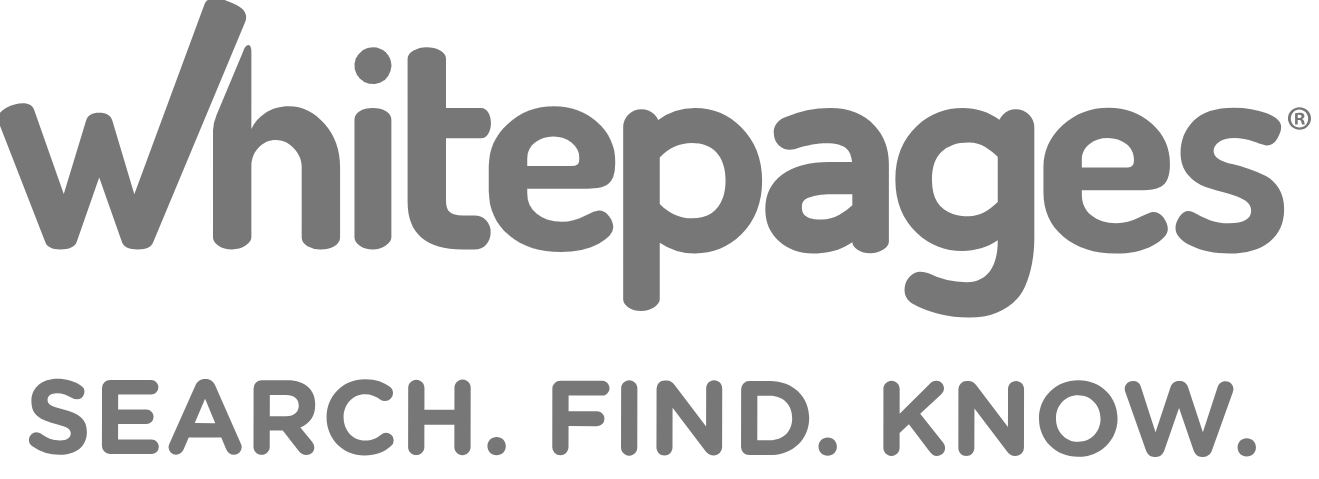Какие методы и приемы интернет-розыска могут помочь нам в установлении личности звонившего? Если все, что у нас есть — это только его телефонный номер. Законно, быстро и достоверно.

Самым простым и очевидным способом «пробить» номер звонившего абонента может быть запрос в один из интернет-поисковиков. Для примера воспользуемся этим способом, чтобы проверить наш офисный телефон:

На первый взгляд всё хорошо находится обычным запросом. Но, предположим, что этот же номер во всех объявлениях размещался бы не в формате ХХХ-ХХ-ХХ, а например в следующем виде:

Как вы можете видеть, теперь результатов поиска просто нет. Хотя сам искомый номер не поменялся. Отсюда возникает вывод о том, что поисковики не способны ещё самостоятельно определять различные формы написания телефонных номеров.
Oднако мы можем научить их делать это посредством специализированного запроса, в котором будут включены все виды написания номера телефона. Попробуем сделать это также для нашего офисного номера в поисковике Яндекс. Текст запроса будет выглядеть так: (телефон | факс | звонить | «т» | «ф» | «тел») & («983-04-83» | «983-0483» | «9830483» | «983-0-483» | «98304-83» | «98-30-483» | «9-8-3-0-4-8-3» | «9-830-483»)

Как вы видите, поиск стал более чётким и правильным. В поисковую выдачу были включены все формы написания номера телефона.
Маленький Лайфхак. Для определения звонящего абонента (прежде всего офисные телефоны) удобно использовать возможности специализированных программ: «2GIS Dialer»и «Телефон» от Google Inc.

Оба приложения доступны для скачивания на смартфоны. Для определения абонентов они оба используют собственные базы данных контактов фирм и индивидуальных предпринимателей.
Все эти советы с большой долей вероятности помогут вам в установлении владельца того или иного офисного телефона, а в отдельных случаев и частного сотового аппарата.
Но когда нам нужно достаточно точно узнать фактического владельца номера мобильного телефона, следует прибегнуть к другим способам. Первый из них лежит на поверхности, хотя всё еще не используется широко. Как известно, современные мессенжеры постепенно вытесняют классические СМС-сообщения и звонки. Это удобно, но требует регистрации. Ключевое слово — «регистрации».
А при любой регистрации данные абонентов хранятся на серверах самих мессенжеров.
В приведенном ниже примере видно, что в случае если телефонная книжка смартфона не смогла определить абонента (и даже 2GIS Dialer не смог того сделать), то отчаиваться не стоит.

А следует скопировать номер звонившего, открыть мессенжер (в нашем случае Viber), нажать кнопку «добавить абонента» и вставить номер туда. Естественно, что Viber не найдет данного номера на вашем смартфоне, но предложит добавить его для общения. Добавляете и — в списке сообщений у вас появляется личность вашего звонившего.
Но и это не единственный способ получения информации о звонившем. Многие социальные сети сейчас активно включают идентификацию своих пользователей через номера сотовых. Так и Facebook, о чём знают не все, в качестве идентификатора для поиска людей принимает номера телефонов. Просто введите телефонный номер в окно поиска, как на картинке:

Все представленные приёмы сбора информации являются общедоступными и простейшими в применении. В затруднительных же ситуациях вы всегда можете обратиться к нам. Звоните, пишите на почту или сообщения в соц.сетях! Ведь мы работаем, чтобы помогать.
С уважением, Игорь Бедеров
Как по номеру телефона идентифицировать абонента
Автор:
04 июня 2018 00:28
Как можно быстро и законными способами выяснить личность позвонившего вам человека, если вам известен лишь его телефонный номер. Проще всего достоверную информацию можно получить, введя запрос в один из поисковиков в Интернете, например, в Google. Итак, вводим номер телефона и через полсекунды получаем результат.

Источник:
Вроде бы все хорошо и проблема решается с помощью обычного запроса. Это если номер дается в формате 111-11-11, а если бы он давался в формате 1-1-1-1-1-1-1?
Поисковик затратил на поиски много времени (по компьютерным понятиям, конечно), а результат поиска нулевой, хотя цифры остались те же, изменился лишь формат, а поисковики, по-видимому, не умеют справляться с этой проблемой.
Однако их можно научить, сделав специализированный запрос, где будут присутствовать все варианты записи телефонного номера. В поисковике Яндекса это будет иметь такой вид: (телефон | факс | звонить | «т» | «ф» | «тел»;) & («645-66-01» | «645-6601» | «6456601» | «645-6-601» | «64566-01» | «64-56-601» | «6-4-5-6-6-0-1» | «6-456-601»)
Как видим, благодаря этому поиск дал четкие результаты со всеми формами написания телефонного номера.
Небольшой совет: чтобы определить, кто звонит (это относится в первую очередь к офисным телефонам), можно воспользоваться специализированными программами: «2GIS Dialer», а также «Телефон» от Google Inc.

Источник:

Источник:
Оба эти приложения можно скачать на смартфон. Они определяют абонентов, используя собственные базы, содержащие данные о контактах как фирм, так и индивидуальных предпринимателей.
Воспользовавшись нашими советами, вы получите возможность установить, кому принадлежит офисный телефон, а в некоторых случаях – и частный сотовый.
Однако если речь идет о фактическом владельце номера мобильного телефона, то придется прибегнуть к другим способам. Проще всего воспользоваться каким-нибудь современным мессенджером, которые медленно, но верно вытесняют традиционные SMS-сообщения и звонки. Помочь сможет то, что для пользования им придется зарегистрироваться, то есть сервер мессенджера будет хранить данные любого зарегистрировавшегося абонента.
Ниже приведен пример того, как это работает, если не удалось определить абонента с помощью телефонной книжки смартфона и даже 2GIS Dialer.

Источник:
Алгоритм действий такой: копируем номер звонившего, открываем мессенджер (мы взяли для примера Viber, нажимаем кнопку «добавить абонента» и вставить нужный номер туда. Как и следовало ожидать, Viber не сможет найти данный номер на вашем смартфоне, однако предложит добавить его, чтобы можно было общаться. Выполняем это действие, и получаем в списке сообщений личность того, кто вам звонил.
Есть и другой способ выяснить это с помощью социальных сетей, у которых идентификация пользователей происходит по номеру сотового. Facebook*, например, принимает номер телефона как идентификатор для поиска людей. Нужно просто ввести этот номер в окно поиска, как показано ниже:

Источник:
Источник:
Ссылки по теме:
Caller-ID system response sounds in various cases: analog, ISDN and digital PBX
Caller identification (Caller ID) is a telephone service, available in analog and digital telephone systems, including voice over IP (VoIP), that transmits a caller’s telephone number to the called party’s telephone equipment when the call is being set up. The caller ID service may include the transmission of a name associated with the calling telephone number, in a service called Calling Name Presentation (CNAM). The service was first defined in 1993 in International Telecommunication Union—Telecommunication Standardization Sector (ITU-T) Recommendation Q.731.3.[1]
The information received from the service is displayed on a telephone display screen, on a separately attached device, or on other displays, such as cable television sets when telephone and television service is provided by the same vendor. Value to society includes use by suicide-prevention hot lines and enabling businesses «like pizza restaurants and florists»
to quickly have confidence in telephoned orders.[2] The customer has control as to whether one’s full name or merely first initial appears, a choice that to avoid a fee must be selected when the initial listing is generated.[3][4][5]
Caller ID service, which is also known by similar terms such as CID, calling line identification (CLI, CLID), calling number delivery (CND), calling number identification (CNID), calling line identification presentation (CLIP), and call display, does not work with Centrex,[6] a phone system widely used by corporations that allows outside callers to dial an extension without going through an operator.
Calling-line identification[edit]
In some countries, the terms caller display, calling line identification presentation (CLIP), call capture, or just calling line identity are used; call display is the predominant marketing name used in Canada (although some customers still refer to it colloquially as «caller ID»). The concept of calling number identification as a service for POTS subscribers originated from automatic number identification (ANI) as a part of toll free number service in the United States.
However, caller ID and ANI are not equivalent services. ANI was originally a service in a non-electronic central office that identified the telephone number of the line from which a call was originated. Previous to this, the calling number could not be identified electronically. In addition to the caller’s telephone number, caller ID may also transmit the subscriber’s name, when available. The name can be passed on by the originating central office, or it is obtained from a line information database by the terminating switch. If no name is available, the city, State, Province, or other designation may be sent. Some of these databases may be shared among several companies, each paying every time a name is «extracted». It is for this reason that mobile phone callers appear as «WIRELESS CALLER», or the location where the phone number is registered.
The displayed caller ID also depends on the equipment originating the call.
If the call originates on a POTS line (a standard loop-start line), then caller ID is provided by the service provider’s local switch. Since the network does not connect the caller to the callee until the phone is answered, generally the caller ID signal cannot be altered by the caller. Most service providers, however, allow the caller to block caller ID presentation through the vertical service code *67.
A call placed behind a private branch exchange (PBX) has more options. In the typical telephony environment, a PBX connects to the local service provider through Primary Rate Interface (PRI) trunks. Generally, although not absolutely, the service provider simply passes whatever calling line ID appears on those PRI access trunks transparently across the Public Switched Telephone Network (PSTN). This opens up the opportunity for the PBX administrator to program whatever number they choose in their external phone number fields.
Some IP phone services (ITSPs, or Internet Telephony Service Providers) support PSTN gateway installations throughout the world. These gateways egress calls to the local calling area, thus avoiding long distance toll charges. ITSPs also allow a local user to have a number located in «foreign» exchange; the New York caller could have a Los Angeles number, for example. When that user places a call, the calling line ID would be that of a Los Angeles number, although they are actually located in New York. This allows a call return without having to incur long distance calling charges.
With cellphones, the biggest issue appears to be in the passing of calling line ID information through the network. Cellphone companies must support interconnecting trunks to a significant number of wireline and PSTN access carriers.
CLI localisation[edit]
Calling line identity (CLI) localisation is the process of presenting a localised calling line identity to the recipient of a telephone call. CLI localisation is used by various organisations, including call centres, debt collectors and insurance companies. CLI localisation allows companies to increase their contact rate by increasing the chance that a called party will answer a phone call. Because a localised CLI is displayed on the called party’s device, the call is perceived as local and recognisable to the caller rather than a withheld, unknown or premium rate number. The presented telephone number is adjusted depending on the area code of the dialed number.[7]
In 2020, the Eastern District of Texas found a single missed call using a localized number was enough to trigger Article III standing under Telephone Consumer Protection Act (TCPA). The court reasoned, «At issue in this case is a missed call, not a single, unsolicited text message. It only takes one glance at a text message to recognize it is for an extended warranty for a car you have never owned or a cruise you have won from a raffle you never entered. A missed call with a familiar area code, on the other hand, is more difficult to immediately dismiss as an automated message.»[8][9]
History[edit]
In 1968, Theodore George «Ted» Paraskevakos, while working in as a communications engineer for SITA[10] in Athens, Greece, began developing a system to automatically identify a telephone caller to a call recipient. After several attempts and experiments, he developed the method in which the caller’s number was transmitted to the receiver’s device. This method was the basis for modern-day Caller ID technology.[11][12] From 1969 through 1975, Paraskevakos was issued twenty separate patents related to automatic telephone line identification,[13] and since they significantly predated all other similar patents, they appear as prior art in later United States patents issued to Kazuo Hashimoto[14] and Carolyn A. Doughty.[15]
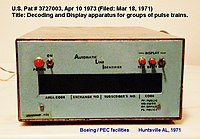
The first caller identification receiver
In 1971, Paraskevakos, working with Boeing in Huntsville, Alabama, constructed and reduced to practice a transmitter and receiver, representing the world’s first prototypes of caller-identification devices. They were installed at Peoples’ Telephone Company in Leesburg, Alabama, and were demonstrated to several telephone companies. These original and historic working models are still in the possession of Paraskevakos. In the patents related to these devices, Paraskevakos also proposed to send alphanumeric information, such as the caller’s name, to the receiving apparatus and to make banking by telephone feasible. He also proposed to identify the calling telephone by special code; e.g., «PF» for public phone, «HO» for home phone, «OF» for office phone, «PL» for police.
In May 1976, Kazuo Hashimoto, a prolific Japanese inventor with over one thousand patents worldwide,[16] first built a prototype of a caller ID display device that could receive caller ID information. His work on caller ID devices and early prototypes was received in the Smithsonian Institution, National Museum of American History in 2000.[17] U.S. patent 4,242,539, filed originally on May 8, 1976, and a resulting patent re-examined at the patent office by AT&T, was successfully licensed to most of the major telecommunications and computer companies in the world.[18]
Initially, the operating telephone companies wanted to have the caller ID function performed by the central office as a voice announcement and charged on a per-call basis.[citation needed] John Harris, an employee of Northern Telecom’s telephone set manufacturing division in London, Ontario, promoted the idea of displaying caller ID on a telephone. The telephone was coded ECCS for Enhanced Custom Calling Services. A video of his prototype was used to leverage the feature from the central office to the telephone set.[citation needed]
In 1977, the Brazilian inventor Valdir Bravo Salinas filed a patent application for a caller ID device at the Brazilian Patent and Trademarks Office (INPI). The patent was issued in 1982 as patent PI7704466 and is the first patent issued for a caller ID equipment in Brazil.[citation needed] Later in 1980, two other Brazilian inventors, João da Cunha Doya and Nélio José Nicolai, filed patent applications for other caller ID devices. Doya’s application was filed on May 2, 1980 and issued as patent PI8003077. Nicolai’s application was filed on July 2, 1980 and rejected for being a copy of Salinas’ invention.[citation needed] In 1981 another application for a caller ID equipment was filed at the INPI by José Daniel Martin Catoira and Afonso Feijó da Costa Ribeiro Neto. This application was granted and the patent issued as patent PI8106464.[citation needed]
The first market trial for Caller ID and other «Custom Local Area Signaling Services» (CLASS) was conducted by BellSouth in January 1984 in Orlando, FL after having been approached by Bell Labs (prior to AT&T’s Divestiture on January 1, 1984) to conduct a trial. A press conference with ABC, NBC, CBS, and CNN was conducted announcing the event. The name Caller ID was decided by the BellSouth Product Team, purposely not trademarking the name so that other Telcos would be free to adopt the name for ubiquity. The other regional Bell operating companies later adopted the name and eventually became the generally accepted name in the United States. Planning for the trial was initiated by a team in Bell Laboratories, AT&T, and Western Electric before the Bell System divestiture, with the participation of Bell Atlantic. The purpose of these trials was to assess the revenue potential of services that depend on deployment of the common channel signaling network needed to transmit the calling number between originating and terminating central offices. Trial results were analyzed by Bellcore members of the original team.[citation needed]
In 1987, Bell Atlantic (now Verizon Communications) conducted another market trial in Hudson County, New Jersey, which was followed by limited deployment. BellSouth was the first company to deploy Caller ID commercially in December 1988 in Memphis, Tennessee, with a full deployment to its nine-state region over the next four years. Bell Atlantic was the second local telephone company to deploy Caller ID in New Jersey’s Hudson County, followed by US West Communications (now CenturyLink) in 1989.[6]
Type II caller ID[edit]
In 1995, Bellcore released another type of modulation, similar to Bell 202, with which it became possible to transmit caller ID information and even provide call-disposition options while the user was already on the telephone. This not-for-free service[19] became known in some markets as call waiting ID, or (when it was combined with call-disposition options) Call Waiting Deluxe; it is technically referred to as Analog Display Services Interface. «Call Waiting Deluxe» is the Bellcore (now Telcordia Technologies) term for Type II caller ID with Disposition Options.
This class-based POTS-telephone calling feature works by combining the services of call waiting with caller ID[19] but also introduces an «options» feature that, in conjunction with certain screen-based telephones, or other capable equipment, gives a telephone user the option to
- Switch: Place the current call on hold to take the second call (not a new feature)
- Hang-up: Disconnect the current call and take the second call (not a new feature)
- Please Hold: Send the caller either a custom or telephone-company-generated voice message asking the caller to hold
- Forward to Voice Mail: Send the incoming caller to the recipient’s voice mail service.
- Join: Add the incoming caller to the existing conversation.
data checksum
digit d1 d2 d3 d4 s1 s2 s3 s4
1 1 0 0 0 1 1 1 1
2 0 1 0 0 0 1 1 1
3 1 1 0 0 1 0 1 1
4 0 0 1 0 0 0 1 1
5 1 0 1 0 1 1 0 1
6 0 1 1 0 0 1 0 1
7 1 1 1 0 1 0 0 1
8 0 0 0 1 0 0 0 1
9 1 0 0 1 1 1 1 0
0 0 1 0 1 0 1 1 0
* 1 1 0 1 1 0 1 0
# 0 0 1 1 0 0 1 0
A 1 0 1 1 1 1 0 0
B 0 1 1 1 0 1 0 0
C 1 1 1 1 1 0 0 0
D 0 0 0 0 0 0 0 0
FSK mark= 1200 Hz space= 2200 Hz 1200 bpsk
The above flexibility requires the immediate presence of both a phone and a display screen, not one «several rooms away» from the other.[19] By 2007, Verizon and AT&T had bundled these services with still others, including speed dialling, «free» inside wiring maintenance, and unlimited minutes. The result was increased monthly spending for those customers adding features, but reduced individual charges
for those options they already had.[20]
Operation[edit]
In the United States and Canada, caller ID information is sent to the called party by the telephone switch as an analog data stream (similar to data passed between two modems), using Bell 202 modulation between the first and second rings, while the telephone unit is still on hook. If the telephone call is answered too quickly after the first ring, caller ID information may not be transmitted to the recipient. Also, in the United States and Canada a caller may block the display of the number they are calling from by dialling *67 before dialling the phone number.[21] This will not work when dialling an «800» number, where the receiver of the call pays for the call or when 911 emergency calls are made.
There are two types of caller ID: number-only and name+number. Number-only caller ID is called Single Data Message Format (SDMF), which provides the caller’s telephone number, the date and time of the call. Name+number caller ID is called Multiple Data Message Format (MDMF), which in addition to the information provided by SDMF format, can also provide the directory listed name for the particular number. Caller ID readers which are compatible with MDMF can also read the simpler SDMF format, but an SDMF caller ID reader will not recognize an MDMF data stream, and will act as if there is no caller ID information present, e.g. as if the line is not equipped for caller ID.
Instead of sending the caller ID in between the first and second ring, some systems (such as in the UK) use line reversal to announce the caller ID, or caller ID signals are simply sent without any announcement. Instead of Bell 202, the European alternative V.23 is sometimes used (without the 75-baud reverse channel) or the data is sent using DTMF signalling.
In general, CID as transmitted from the origin of the call is only the calling party’s full phone number (including area code, and including international access code and country code if it’s an international call). The calling party name is added by the consumer’s terminating central office if the consumer has subscribed to that service. Calling name delivery is not automatic. A query (dip) with Signalling System 7 (SS7) query may be initiated by the called party’s central office to retrieve the information for Calling Name delivery to the caller ID equipment at the subscriber’s location, if the caller’s name has not already been associated with the calling party’s line at the originating central office. Canadian systems (depending on the provider) using CCS7 automatically (but not in all cases) send the calling name with the call set-up and routing information at the time of the call.
To look up the name associated with a phone number, the carrier, in some instances, has to access that information from a third-party database, and some database providers charge a small fee for each access to such databases. This CNAM dip fee is very small – less than a penny per call. AT&T starts their negotiations for CNAM dip fees at about $.004 per lookup. OpenCNAM fees are a bit more expensive, up to $.0048 per lookup. To avoid such charges, some carriers will report the name as «unavailable», or will report the name as «(city), (state)» based on the phone number, particularly for wireless callers. For toll-free numbers, they may report a string such as TOLLFREE NUMBER if the name is not available in a database.
Smartphones can use a third-party mobile app to do the name lookup in a third-party database.
Uses[edit]
Telemarketing[edit]
Telemarketing organisations often spoof caller ID. In some instances, this is done to provide a «central number» for consumers to call back, such as a toll-free number, rather than having consumers call back the outbound call center where the call actually originated. However, some telemarketers block or fraudulently spoof caller ID to prevent being traced. It is against United States federal law for telemarketers to block or to send misleading caller ID.[22] Individuals may file civil suits and the Federal Communications Commission (FCC) can fine companies or individuals for illegally spoofing or blocking caller ID.[23]
Mobile providers[edit]
Most mobile phone providers used the caller ID to automatically connect to voice mail when a call to the voice mail number was made from the associated mobile phone number, bypassing the need to enter a password. While this was convenient for many users, because of spoofing, this practice has been replaced by more secure authentication by many carriers.
Regional differences[edit]

Converter that converts from DTMF to FSK format
Caller ID transmission is implemented using different technologies and standards in some countries.[24] In the United States the Bellcore FSK standard is prevalent, whereas Taiwan uses ETSI FSK. Sometimes individual service providers within a country use different standards. Caller ID converters can be used to translate from one standard to another.
| Country | Caller ID standard |
|---|---|
| Australia | Bellcore FSK |
| Brazil | Bellcore FSK / V23 FSK / DTMF |
| Canada | Bellcore FSK |
| China | Bellcore FSK / DTMF |
| Hong Kong | Bellcore FSK |
| Ireland | ETSI FSK V23 (ETS 300 659-1) Ring Pulse Alert Signalling. Data sent after first short ring. |
| Japan | V23 FSK / DTMF |
| New Zealand | Bellcore FSK[25] |
| Norway | ETSI FSK |
| Spain | ETSI FSK |
| Taiwan | DTMF / ETSI FSK |
| United Kingdom | SIN227 (V23 FSK before first ring) |
| United States | Bellcore FSK |
UK[edit]
Telephone equipment usually displays CLID information with no difficulty. Modems are notoriously problematic; very few modems support the British Telecom standard in hardware; drivers for those that do often have errors that prevent CLID information from being recognised.[26] Other UK telephone companies use slight variations on the Bellcore standard, and CLID support is «hit and miss».[27]
Australia[edit]
CND is currently available in Australia to subscribers to the Integrated Services Digital Network (ISDN).
There is a legislation under section 276 of the Australia Industry Code — Calling Number Display (ACIF C522: February 2003).[28]
Legal issues[edit]
United States[edit]
In the United States, telemarketers are required to transmit caller ID.[29] This requirement went into effect on January 29, 2004.[30] It is generally illegal to spoof Caller ID if done «with the intent to defraud, cause harm, or wrongfully obtain anything of value». The acts are prohibited under Truth in Caller ID Act of 2009.
Courts have ruled that caller ID is admissible.[31] Providers are required by FCC rules to offer «per-call» blocking of caller ID to their customers. Legislation in the United States in 2007 made caller ID spoofing illegal for fraudulent purposes.
In March 2017 the FCC approved a new rule that would allow telecommunication companies to block robocallers that use fake caller ID numbers to conceal their true location and identity. The rule means telecommunication companies can block robocallers at the network level, long before a call passes through a carriers network and arrives at a subscriber’s house or business.[32] T-Mobile was the first major US carrier to announce plans to implement blocking technologies based on the new rule.[32][33]
Starting in mid-2017, and with intended culmination in 2019, the FCC pushed forward Caller ID certification implemented via a methodology of SHAKEN/STIR.[34][35]
This initiative was further strengthened by the TRACED Act, enacted in December 2019.[36]
Blocking and unblocking caller ID[edit]
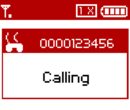
The caller ID information is masked when a SkypeOut call is placed.
Caller ID blocking is the common term for a service by which a caller can prevent the display of the calling number on the recipient’s telephone. Blocking the number is formally referred to as calling line identification restriction (CLIR). This customer option was part of the legal authorization for New York State’s 1992 authorization of Caller ID.[2]
Telecommunications regulators vary in their requirements for the use and effectiveness of assorted technologies to prevent numbers from being displayed. Generally, unlisted numbers are always blocked. Non-published and regular listed numbers are not usually blocked. But there is varying treatment for the determination of call display blocking because of many factors. If desired, customers should inquire carefully to make sure their number will not be displayed. The telephone service provider may also have vertical service codes which can be dialed to configure blocking as active for all calls or on a call-by-call basis. In some locations in the United States, regulations allow (or require) blocking to be automatic and transparent to the caller.
Where blocking is applied on a call-by-call basis (that is, at the time a call is made), subscribers can block their caller ID by dialing a special code (a vertical service code, or VSC) before making a call. In North America and some other regions, the code is *67 (1167 on rotary phones), while in the United Kingdom and Ireland, it is 141. This special code does not block the information from companies using call capture technology. This means that equipment with caller ID will simply display the word «PRIVATE» or «WITHHELD». When CNID is blocked at the caller’s request, the number is actually transmitted through the entire telephone network, with the «presentation withheld» flag set; the destination CO is expected to honor this flag, but sometimes does not—especially when the destination phone number is served by an ISDN PRI.
Alternatively, in cases where caller ID is being blocked automatically, it can only be released on a call-by-call basis by dialing a special code (*82 in North America; 1470 in the UK). See «Enabling», below.
Similarly, some countries offer anonymous caller rejection, which rejects all calls when the subscriber’s name, number (or both) is blocked. Some telephone companies protect their clients from receiving calls with blocked information by routing anonymous calls to a service (such as AT&T Privacy Manager), where the caller is required to announce himself or herself. The service then asks the called party if they want to accept or reject the call. Other telephone companies play a recording to the caller advising them of the called party’s rejection configuration, and often offer advice (such as prefixing their dialing with *82) on how to get their call to the intended called party. Emergency services will most likely be able to show the restricted number using a service called calling line identification restriction override (CLIRO), or by using general ANI services. These features create a cat-and-mouse game situation,[37] whereby subscribers must purchase additional services in order to cancel out other services.
Disabling caller ID delivery[edit]
Depending on the operator and country, there are a number of prefix codes that can block or disable Caller ID transmission by the caller. Prefixing a telephone number with the following codes disables Caller ID on a per-call basis:
| Country | Prefix |
|---|---|
| Albania | #31# (cell phones) |
| Argentina | *31# (landlines) or #31# (most cell phone companies) |
| Australia | #31# (mobile phones)[38] 1831 (analogue landline) *67 (NBN landline) |
| Brazil | #31# (mobile phones) |
| Bulgaria | #31# (mobile phones) |
| Denmark | #31# |
| Canada | #31# (mobile phones) or *67 (landlines) |
| Croatia | #31# |
| France | #31# (cell phones) or 3651 (landlines) |
| Germany | On most landlines and mobiles, *31#; however, some mobile providers use #31#. |
| Greece | *31* (landlines), #31# (cell phones). |
| Hong Kong | 133 |
| Iceland | *31* |
| India | #31# after network unlocked |
| Ireland | #31# (dialling from mobile) 141 (dialling from landlines) |
| Israel | *43 (landlines) or #31# (most cell phone companies) |
| Italy | *67# (landlines) or #31# (most cell phone companies) |
| Japan | 184 |
| Nepal | *9# (NTC) |
| Netherlands | *31*, #31# (KPN) |
| New Zealand | 0197 (Telecom/Spark), *67 (Vodafone), #31# (2degrees) |
| North America | *67, 1167 (rotary phone), #31# (AT&T Wireless) |
| Pakistan | *32# PTCL |
| Poland | #31# (mobile phones) |
| Romania | #31# |
| Serbia | #31# |
| South Africa | *31* (Telkom) |
| South Africa | #31# (Cell Phones) |
| South Korea | *23 or *23# (most cell phone companies) |
| Spain | #31# (Cell Phones); 067 (landlines) |
| Sweden | #31# |
| Switzerland | *31# (or *31+Targetnumber -> Call-by-Call disable) (landline) #31# (or #31+Targetnumber -> Call-by-Call disable) (mobile) |
| United Kingdom | 141 |
| United States | *67 |
Other countries and networks vary; however, on GSM mobile networks, callers may dial #31#[39] before the number they wish to call to disable it.
Some countries and network providers do not allow Caller ID blocking based on the domestic telecommunications regulations, or CLIR is only available as an external app or value-added service.[40]
Enabling caller ID delivery[edit]
Depending on the operator and country, there are a number of prefix codes that can unblock or enable Caller ID transmission by the caller.
| Country | Prefix code |
|---|---|
| Australia | *31# (mobile phones) 1832 (analogue landline) *65 (NBN landline) |
| Czech Republic | *31* (landline) |
| Denmark | *31* |
| Germany | *31# (Some mobile providers) |
| India | *31# |
| Ireland | *31# (dialling from mobile) 142 (dialling from landlines) |
| Japan | 186 |
| Hong Kong | 1357 |
| New Zealand | 0196 (Telecom/Spark) |
| North America | *82 (*UB, UnBlock) 1182 (rotary phone). |
| Switzerland | #31# |
| United Kingdom | 1470 |
On GSM mobile networks, callers may dial *31#[39] to enable caller ID on all subsequent calls.
Caller ID spoofing[edit]
Caller ID spoofing is the practice of causing the telephone network to display a number on the recipient’s caller ID display that is different than that of the actual originating station.[41] Many telephone services, such as ISDN PRI based PBX installations, and voice over IP services, permit the caller to configure customized caller ID information. In corporate settings this permits the announcement of switchboard number or customer service numbers. Caller ID spoofing may be illegal in some countries or in certain situations.
Dip fee fraud[edit]
A consumer’s telephone company must pay a small fee for the Caller ID text that is transmitted during a call. The fee is called a CNAM dip fee. It is named a dip fee because the called party’s carrier pays a fee to dip into the originating telephone company’s database to get the Caller ID information.[42][43][44]
Several companies engage in generating dip fees by catering to companies that make a large number of outbound calls. CallerId4U and Pacific Telecom Communications Group cater to telemarketers and generate revenue on fees from Caller ID information. The telemarketers enter into an agreement with companies like CallerId4U and Pacific Telecom Communications Group and share the revenue produced during the telemarketing call.[42]
Dip fees vary wildly. According to Doug McIntyre, the wholesale rates are on the order of $0.002 to $0.006 per database dip.[45] And according to Aaron Woolfson, president of TelSwitch Inc, the fee structure for dip fee fraud can include:[44]
- the carriers pay a fee of $0.003 per call or $300 per 100,000 calls to the database owner
- the database owner pays the number dealers $0.0024 per call or $240 per 100,000 calls
- the number dealers share revenue with the robocaller $0.00096 or $96 per 100,000 calls
Consumers face significant barriers to exiting a call list and often cannot have themselves removed from the list. Calling the opt-out numbers often results in a fast-busy so the call never completes and the consumer remains on the list.[42]
According to reports companies like CallerId4U has thousands of phone numbers and thousands of FTC complaints filed against them each month for violating Do Not Call registration. The large number of phone numbers dilute the number of complaints against the company and phone number.[42]
Trivia[edit]
- The inverse feature, giving the number originally dialed, is known as direct inward dialing, direct dialing inward, or Dialed Number Identification Service. This tells the PBX where to route an incoming call, when there are more internal lines with external phone numbers than there are actual incoming lines in a large company or other organisation.
- Not all types of caller identification use 202-type modulation, nor do all systems send the information between the first and second ring, e.g., British Telecom sends the signal before the first ring, after a polarity reversal in the line. (Because of this most caller ID software is not compatible with BT even if the modem is.) As a result, not all caller ID devices are compatible from country to country or within the same country, even though the basic phone system is the same. Some providers use FSK, while others use the DTMF protocol.
See also[edit]
- Calling Name Presentation
- Local number portability
- Location Routing Number
- Truth in Caller ID Act of 2009
References[edit]
- ^ Tu, Huahong; Doupé, Adam; Zhao, Ziming; Ahn, Gail-Joon (September 2017). «Toward Standardization of Authenticated Caller ID Transmission» (PDF). IEEE.org. Retrieved February 27, 2019.
- ^ a b Anthony Ramirez (March 12, 1992). «New York State Approves Caller-Identification Service». The New York Times. Retrieved September 21, 2022.
- ^ Claudia H. Deutsch (December 10, 2006). «Calling All Cheats: Meet Your Enemy». The New York Times. Retrieved September 21, 2022.
- ^ Clyde Haberman (March 19, 2009). «B. Madoff, and Proud of It». The New York Times. Retrieved September 21, 2022.
- ^ Choose how your info appears in the phone directory, List of CenturyLink operating companies, retrieved September 21, 2022,
Replace your first and/or middle name with initials.
- ^ a b Anthony Ramirez (April 4, 1992). «Caller ID: Consumer’s Friend or Foe?». The New York Times. Retrieved September 21, 2022.
- ^ «CLI localisation Under the Microscope». Nexbridge. March 30, 2016. Archived from the original on March 30, 2016. Retrieved February 24, 2019.
- ^ Troutman, Eric J. (September 15, 2020). «Repeat-Player Cunningham Earns Another Huge TCPA Victory- Court Finds Receipt of Missed Debt Collection Call Affords Article III Standing». TCPA World. Retrieved September 19, 2020.
- ^ Cunningham v. Radius Global Solutions Llc (E.D. Tx. September 14, 2020).
- ^ Formerly known as Société internationale de télécommunication aéronautique
- ^ «Theodore Paraskevakos: Executive Profile & Biography». Business Week. Retrieved June 20, 2013.
- ^ Milani, Kate (November 10, 2003). «Inventor reveals the names behind numbers». BizJournals.com (Baltimore). Retrieved June 20, 2013.
- ^ Patent #3,727,003/4-10-1973 and Patent # 3,812,296/5-21-1974
- ^ Patent # 4,242,539/12-30-1980
- ^ Patent # 4,551,581/11-5-1985 and Patent # 4,582,956/4-15-1986; (both assigned to AT&T Bell Laboratories)
- ^ PhoneTel Patent Services :: History : Hashimoto Archived 2007-07-01 at the Wayback Machine
- ^ Hashimoto, Kazuo; Kilby, Jack. «PhoneTel Collection» – via siris-archives.si.edu Library Catalog.
- ^ «Fight heats up over patents on Caller ID. (Kazuo Hashimoto)». April 1, 1995. Archived from the original on November 20, 2008.
- ^ a b c Elizabeth Douglas (August 19, 1999). «Phone Companies Combine Familiar Services for New Call». The Los Angeles Times. Retrieved September 22, 2022.
- ^ James S. Granelli (July 17, 2007). «AT&T; raises rates on features». The Los Angeles Times. Retrieved September 22, 2022.
- ^ «How to Hide Your Number With *67».
- ^ «47 CFR 64.1601» (PDF).
- ^ «Caller ID Spoofing». Federal Communication Commission. September 26, 2018. Retrieved January 28, 2019.
- ^ «Caller ID FAQ». Marilyn Ainslie. April 1, 2004. Archived from the original on February 14, 2015. Retrieved February 3, 2015.
- ^ «Telecom New Zealand TNA 102» (PDF).
- ^ «How to modify your modem driver file». Talking Caller ID. Archived from the original on February 7, 2019. Retrieved May 11, 2020.
- ^ «Caller ID FAQ». Marilyn Ainslie. April 1, 2004. Archived from the original on March 21, 2016. Retrieved March 21, 2016.
- ^ «Caller Identification». AMTA. Archived from the original on August 15, 2018. Retrieved May 11, 2020.
- ^ 18 FCC Rcd 14014 (FCC, July 3, 2003) at para. 173 et seq.
- ^ 47 C.F.R. § 64.1601(e).
- ^ State v. Schuette, 273 Kan. 59, 44 P.3d 459 (Kansas 2002)
- ^ a b Sawers, Paul (March 24, 2017). «T-Mobile kicks off industry robocall war with network-level blocking and ID tools». VentureBeat. Retrieved November 23, 2019.
- ^ Fiegerman, Seth (August 19, 2016). «Apple, Google, Microsoft join ‘strike force’ to fight robocalls». CNN Business. Retrieved November 23, 2019.
- ^ Pai, Ajit (2017). «Combating Spoofed Robocalls with Caller ID Authentication». FCC.
- ^ Brodkin, Jon (February 14, 2019). «Ajit Pai orders phone companies to adopt new anti-robocall tech in 2019». Arstechnica.
- ^ Trump signs the TRACED Act, the first federal anti-robocall law
- ^ (Wired)Sean Fallon (February 17, 2009), TrapCall Displays Blocked Numbers on Your Caller ID, retrieved September 21, 2022
- ^ Price, Leigh (June 19, 2012). «HOW TO: block your number when calling someone». Telstra Corporate Affairs. Archived from the original on March 4, 2017. Retrieved February 19, 2019.
- ^ a b «PCS Sites Redirect». www.arcx.com. Archived from the original on February 3, 2008. Retrieved February 12, 2008.
- ^ Unuth, Nadeem (December 20, 2018). «The Best Call Blocker Apps For Smartphones». Lifewire. Retrieved February 18, 2019.
- ^ Panagia, Adam. «Caller ID Spoofing 101 and What To Do About It». AT&T Cyber Aware News and Information. Retrieved February 28, 2019.
- ^ a b c d «Over 100,000 FTC Complaints Filed Against CallerID4U, Inc». The Telecom Compliance News Press. January 22, 2013. Retrieved February 27, 2019.
- ^ JD (January 22, 2013). «CallerId4U, Inc. — Millions of Illegal Telemarketing Calls». 800 Notes. Retrieved February 27, 2019.
- ^ a b Krouse, Sarah (June 4, 2018). «Why Robocallers Win Even if You Don’t Answer». The Wall Street Journal. Retrieved November 23, 2019.
- ^ MacIntyre, Doug (February 3, 2014). «Caller ID information wrong». Newsgroup: comp.dcom.telecom. Usenet: WIKdnRBVbcvWzm3PnZ2dnUVZ_oSdnZ2d@giganews.com. Retrieved November 26, 2019.
External links[edit]
![]()
Look up caller ID in Wiktionary, the free dictionary.
- Report and Order from the FCC on Implementing the Telephone Consumer Protection Act of 1991, including rules and discussion of caller ID issues.
- «Caller ID Information» at Privacy Corps
- Technical details of Caller ID
- Additional MDMF details
Caller-ID system response sounds in various cases: analog, ISDN and digital PBX
Caller identification (Caller ID) is a telephone service, available in analog and digital telephone systems, including voice over IP (VoIP), that transmits a caller’s telephone number to the called party’s telephone equipment when the call is being set up. The caller ID service may include the transmission of a name associated with the calling telephone number, in a service called Calling Name Presentation (CNAM). The service was first defined in 1993 in International Telecommunication Union—Telecommunication Standardization Sector (ITU-T) Recommendation Q.731.3.[1]
The information received from the service is displayed on a telephone display screen, on a separately attached device, or on other displays, such as cable television sets when telephone and television service is provided by the same vendor. Value to society includes use by suicide-prevention hot lines and enabling businesses «like pizza restaurants and florists»
to quickly have confidence in telephoned orders.[2] The customer has control as to whether one’s full name or merely first initial appears, a choice that to avoid a fee must be selected when the initial listing is generated.[3][4][5]
Caller ID service, which is also known by similar terms such as CID, calling line identification (CLI, CLID), calling number delivery (CND), calling number identification (CNID), calling line identification presentation (CLIP), and call display, does not work with Centrex,[6] a phone system widely used by corporations that allows outside callers to dial an extension without going through an operator.
Calling-line identification[edit]
In some countries, the terms caller display, calling line identification presentation (CLIP), call capture, or just calling line identity are used; call display is the predominant marketing name used in Canada (although some customers still refer to it colloquially as «caller ID»). The concept of calling number identification as a service for POTS subscribers originated from automatic number identification (ANI) as a part of toll free number service in the United States.
However, caller ID and ANI are not equivalent services. ANI was originally a service in a non-electronic central office that identified the telephone number of the line from which a call was originated. Previous to this, the calling number could not be identified electronically. In addition to the caller’s telephone number, caller ID may also transmit the subscriber’s name, when available. The name can be passed on by the originating central office, or it is obtained from a line information database by the terminating switch. If no name is available, the city, State, Province, or other designation may be sent. Some of these databases may be shared among several companies, each paying every time a name is «extracted». It is for this reason that mobile phone callers appear as «WIRELESS CALLER», or the location where the phone number is registered.
The displayed caller ID also depends on the equipment originating the call.
If the call originates on a POTS line (a standard loop-start line), then caller ID is provided by the service provider’s local switch. Since the network does not connect the caller to the callee until the phone is answered, generally the caller ID signal cannot be altered by the caller. Most service providers, however, allow the caller to block caller ID presentation through the vertical service code *67.
A call placed behind a private branch exchange (PBX) has more options. In the typical telephony environment, a PBX connects to the local service provider through Primary Rate Interface (PRI) trunks. Generally, although not absolutely, the service provider simply passes whatever calling line ID appears on those PRI access trunks transparently across the Public Switched Telephone Network (PSTN). This opens up the opportunity for the PBX administrator to program whatever number they choose in their external phone number fields.
Some IP phone services (ITSPs, or Internet Telephony Service Providers) support PSTN gateway installations throughout the world. These gateways egress calls to the local calling area, thus avoiding long distance toll charges. ITSPs also allow a local user to have a number located in «foreign» exchange; the New York caller could have a Los Angeles number, for example. When that user places a call, the calling line ID would be that of a Los Angeles number, although they are actually located in New York. This allows a call return without having to incur long distance calling charges.
With cellphones, the biggest issue appears to be in the passing of calling line ID information through the network. Cellphone companies must support interconnecting trunks to a significant number of wireline and PSTN access carriers.
CLI localisation[edit]
Calling line identity (CLI) localisation is the process of presenting a localised calling line identity to the recipient of a telephone call. CLI localisation is used by various organisations, including call centres, debt collectors and insurance companies. CLI localisation allows companies to increase their contact rate by increasing the chance that a called party will answer a phone call. Because a localised CLI is displayed on the called party’s device, the call is perceived as local and recognisable to the caller rather than a withheld, unknown or premium rate number. The presented telephone number is adjusted depending on the area code of the dialed number.[7]
In 2020, the Eastern District of Texas found a single missed call using a localized number was enough to trigger Article III standing under Telephone Consumer Protection Act (TCPA). The court reasoned, «At issue in this case is a missed call, not a single, unsolicited text message. It only takes one glance at a text message to recognize it is for an extended warranty for a car you have never owned or a cruise you have won from a raffle you never entered. A missed call with a familiar area code, on the other hand, is more difficult to immediately dismiss as an automated message.»[8][9]
History[edit]
In 1968, Theodore George «Ted» Paraskevakos, while working in as a communications engineer for SITA[10] in Athens, Greece, began developing a system to automatically identify a telephone caller to a call recipient. After several attempts and experiments, he developed the method in which the caller’s number was transmitted to the receiver’s device. This method was the basis for modern-day Caller ID technology.[11][12] From 1969 through 1975, Paraskevakos was issued twenty separate patents related to automatic telephone line identification,[13] and since they significantly predated all other similar patents, they appear as prior art in later United States patents issued to Kazuo Hashimoto[14] and Carolyn A. Doughty.[15]

The first caller identification receiver
In 1971, Paraskevakos, working with Boeing in Huntsville, Alabama, constructed and reduced to practice a transmitter and receiver, representing the world’s first prototypes of caller-identification devices. They were installed at Peoples’ Telephone Company in Leesburg, Alabama, and were demonstrated to several telephone companies. These original and historic working models are still in the possession of Paraskevakos. In the patents related to these devices, Paraskevakos also proposed to send alphanumeric information, such as the caller’s name, to the receiving apparatus and to make banking by telephone feasible. He also proposed to identify the calling telephone by special code; e.g., «PF» for public phone, «HO» for home phone, «OF» for office phone, «PL» for police.
In May 1976, Kazuo Hashimoto, a prolific Japanese inventor with over one thousand patents worldwide,[16] first built a prototype of a caller ID display device that could receive caller ID information. His work on caller ID devices and early prototypes was received in the Smithsonian Institution, National Museum of American History in 2000.[17] U.S. patent 4,242,539, filed originally on May 8, 1976, and a resulting patent re-examined at the patent office by AT&T, was successfully licensed to most of the major telecommunications and computer companies in the world.[18]
Initially, the operating telephone companies wanted to have the caller ID function performed by the central office as a voice announcement and charged on a per-call basis.[citation needed] John Harris, an employee of Northern Telecom’s telephone set manufacturing division in London, Ontario, promoted the idea of displaying caller ID on a telephone. The telephone was coded ECCS for Enhanced Custom Calling Services. A video of his prototype was used to leverage the feature from the central office to the telephone set.[citation needed]
In 1977, the Brazilian inventor Valdir Bravo Salinas filed a patent application for a caller ID device at the Brazilian Patent and Trademarks Office (INPI). The patent was issued in 1982 as patent PI7704466 and is the first patent issued for a caller ID equipment in Brazil.[citation needed] Later in 1980, two other Brazilian inventors, João da Cunha Doya and Nélio José Nicolai, filed patent applications for other caller ID devices. Doya’s application was filed on May 2, 1980 and issued as patent PI8003077. Nicolai’s application was filed on July 2, 1980 and rejected for being a copy of Salinas’ invention.[citation needed] In 1981 another application for a caller ID equipment was filed at the INPI by José Daniel Martin Catoira and Afonso Feijó da Costa Ribeiro Neto. This application was granted and the patent issued as patent PI8106464.[citation needed]
The first market trial for Caller ID and other «Custom Local Area Signaling Services» (CLASS) was conducted by BellSouth in January 1984 in Orlando, FL after having been approached by Bell Labs (prior to AT&T’s Divestiture on January 1, 1984) to conduct a trial. A press conference with ABC, NBC, CBS, and CNN was conducted announcing the event. The name Caller ID was decided by the BellSouth Product Team, purposely not trademarking the name so that other Telcos would be free to adopt the name for ubiquity. The other regional Bell operating companies later adopted the name and eventually became the generally accepted name in the United States. Planning for the trial was initiated by a team in Bell Laboratories, AT&T, and Western Electric before the Bell System divestiture, with the participation of Bell Atlantic. The purpose of these trials was to assess the revenue potential of services that depend on deployment of the common channel signaling network needed to transmit the calling number between originating and terminating central offices. Trial results were analyzed by Bellcore members of the original team.[citation needed]
In 1987, Bell Atlantic (now Verizon Communications) conducted another market trial in Hudson County, New Jersey, which was followed by limited deployment. BellSouth was the first company to deploy Caller ID commercially in December 1988 in Memphis, Tennessee, with a full deployment to its nine-state region over the next four years. Bell Atlantic was the second local telephone company to deploy Caller ID in New Jersey’s Hudson County, followed by US West Communications (now CenturyLink) in 1989.[6]
Type II caller ID[edit]
In 1995, Bellcore released another type of modulation, similar to Bell 202, with which it became possible to transmit caller ID information and even provide call-disposition options while the user was already on the telephone. This not-for-free service[19] became known in some markets as call waiting ID, or (when it was combined with call-disposition options) Call Waiting Deluxe; it is technically referred to as Analog Display Services Interface. «Call Waiting Deluxe» is the Bellcore (now Telcordia Technologies) term for Type II caller ID with Disposition Options.
This class-based POTS-telephone calling feature works by combining the services of call waiting with caller ID[19] but also introduces an «options» feature that, in conjunction with certain screen-based telephones, or other capable equipment, gives a telephone user the option to
- Switch: Place the current call on hold to take the second call (not a new feature)
- Hang-up: Disconnect the current call and take the second call (not a new feature)
- Please Hold: Send the caller either a custom or telephone-company-generated voice message asking the caller to hold
- Forward to Voice Mail: Send the incoming caller to the recipient’s voice mail service.
- Join: Add the incoming caller to the existing conversation.
data checksum
digit d1 d2 d3 d4 s1 s2 s3 s4
1 1 0 0 0 1 1 1 1
2 0 1 0 0 0 1 1 1
3 1 1 0 0 1 0 1 1
4 0 0 1 0 0 0 1 1
5 1 0 1 0 1 1 0 1
6 0 1 1 0 0 1 0 1
7 1 1 1 0 1 0 0 1
8 0 0 0 1 0 0 0 1
9 1 0 0 1 1 1 1 0
0 0 1 0 1 0 1 1 0
* 1 1 0 1 1 0 1 0
# 0 0 1 1 0 0 1 0
A 1 0 1 1 1 1 0 0
B 0 1 1 1 0 1 0 0
C 1 1 1 1 1 0 0 0
D 0 0 0 0 0 0 0 0
FSK mark= 1200 Hz space= 2200 Hz 1200 bpsk
The above flexibility requires the immediate presence of both a phone and a display screen, not one «several rooms away» from the other.[19] By 2007, Verizon and AT&T had bundled these services with still others, including speed dialling, «free» inside wiring maintenance, and unlimited minutes. The result was increased monthly spending for those customers adding features, but reduced individual charges
for those options they already had.[20]
Operation[edit]
In the United States and Canada, caller ID information is sent to the called party by the telephone switch as an analog data stream (similar to data passed between two modems), using Bell 202 modulation between the first and second rings, while the telephone unit is still on hook. If the telephone call is answered too quickly after the first ring, caller ID information may not be transmitted to the recipient. Also, in the United States and Canada a caller may block the display of the number they are calling from by dialling *67 before dialling the phone number.[21] This will not work when dialling an «800» number, where the receiver of the call pays for the call or when 911 emergency calls are made.
There are two types of caller ID: number-only and name+number. Number-only caller ID is called Single Data Message Format (SDMF), which provides the caller’s telephone number, the date and time of the call. Name+number caller ID is called Multiple Data Message Format (MDMF), which in addition to the information provided by SDMF format, can also provide the directory listed name for the particular number. Caller ID readers which are compatible with MDMF can also read the simpler SDMF format, but an SDMF caller ID reader will not recognize an MDMF data stream, and will act as if there is no caller ID information present, e.g. as if the line is not equipped for caller ID.
Instead of sending the caller ID in between the first and second ring, some systems (such as in the UK) use line reversal to announce the caller ID, or caller ID signals are simply sent without any announcement. Instead of Bell 202, the European alternative V.23 is sometimes used (without the 75-baud reverse channel) or the data is sent using DTMF signalling.
In general, CID as transmitted from the origin of the call is only the calling party’s full phone number (including area code, and including international access code and country code if it’s an international call). The calling party name is added by the consumer’s terminating central office if the consumer has subscribed to that service. Calling name delivery is not automatic. A query (dip) with Signalling System 7 (SS7) query may be initiated by the called party’s central office to retrieve the information for Calling Name delivery to the caller ID equipment at the subscriber’s location, if the caller’s name has not already been associated with the calling party’s line at the originating central office. Canadian systems (depending on the provider) using CCS7 automatically (but not in all cases) send the calling name with the call set-up and routing information at the time of the call.
To look up the name associated with a phone number, the carrier, in some instances, has to access that information from a third-party database, and some database providers charge a small fee for each access to such databases. This CNAM dip fee is very small – less than a penny per call. AT&T starts their negotiations for CNAM dip fees at about $.004 per lookup. OpenCNAM fees are a bit more expensive, up to $.0048 per lookup. To avoid such charges, some carriers will report the name as «unavailable», or will report the name as «(city), (state)» based on the phone number, particularly for wireless callers. For toll-free numbers, they may report a string such as TOLLFREE NUMBER if the name is not available in a database.
Smartphones can use a third-party mobile app to do the name lookup in a third-party database.
Uses[edit]
Telemarketing[edit]
Telemarketing organisations often spoof caller ID. In some instances, this is done to provide a «central number» for consumers to call back, such as a toll-free number, rather than having consumers call back the outbound call center where the call actually originated. However, some telemarketers block or fraudulently spoof caller ID to prevent being traced. It is against United States federal law for telemarketers to block or to send misleading caller ID.[22] Individuals may file civil suits and the Federal Communications Commission (FCC) can fine companies or individuals for illegally spoofing or blocking caller ID.[23]
Mobile providers[edit]
Most mobile phone providers used the caller ID to automatically connect to voice mail when a call to the voice mail number was made from the associated mobile phone number, bypassing the need to enter a password. While this was convenient for many users, because of spoofing, this practice has been replaced by more secure authentication by many carriers.
Regional differences[edit]

Converter that converts from DTMF to FSK format
Caller ID transmission is implemented using different technologies and standards in some countries.[24] In the United States the Bellcore FSK standard is prevalent, whereas Taiwan uses ETSI FSK. Sometimes individual service providers within a country use different standards. Caller ID converters can be used to translate from one standard to another.
| Country | Caller ID standard |
|---|---|
| Australia | Bellcore FSK |
| Brazil | Bellcore FSK / V23 FSK / DTMF |
| Canada | Bellcore FSK |
| China | Bellcore FSK / DTMF |
| Hong Kong | Bellcore FSK |
| Ireland | ETSI FSK V23 (ETS 300 659-1) Ring Pulse Alert Signalling. Data sent after first short ring. |
| Japan | V23 FSK / DTMF |
| New Zealand | Bellcore FSK[25] |
| Norway | ETSI FSK |
| Spain | ETSI FSK |
| Taiwan | DTMF / ETSI FSK |
| United Kingdom | SIN227 (V23 FSK before first ring) |
| United States | Bellcore FSK |
UK[edit]
Telephone equipment usually displays CLID information with no difficulty. Modems are notoriously problematic; very few modems support the British Telecom standard in hardware; drivers for those that do often have errors that prevent CLID information from being recognised.[26] Other UK telephone companies use slight variations on the Bellcore standard, and CLID support is «hit and miss».[27]
Australia[edit]
CND is currently available in Australia to subscribers to the Integrated Services Digital Network (ISDN).
There is a legislation under section 276 of the Australia Industry Code — Calling Number Display (ACIF C522: February 2003).[28]
Legal issues[edit]
United States[edit]
In the United States, telemarketers are required to transmit caller ID.[29] This requirement went into effect on January 29, 2004.[30] It is generally illegal to spoof Caller ID if done «with the intent to defraud, cause harm, or wrongfully obtain anything of value». The acts are prohibited under Truth in Caller ID Act of 2009.
Courts have ruled that caller ID is admissible.[31] Providers are required by FCC rules to offer «per-call» blocking of caller ID to their customers. Legislation in the United States in 2007 made caller ID spoofing illegal for fraudulent purposes.
In March 2017 the FCC approved a new rule that would allow telecommunication companies to block robocallers that use fake caller ID numbers to conceal their true location and identity. The rule means telecommunication companies can block robocallers at the network level, long before a call passes through a carriers network and arrives at a subscriber’s house or business.[32] T-Mobile was the first major US carrier to announce plans to implement blocking technologies based on the new rule.[32][33]
Starting in mid-2017, and with intended culmination in 2019, the FCC pushed forward Caller ID certification implemented via a methodology of SHAKEN/STIR.[34][35]
This initiative was further strengthened by the TRACED Act, enacted in December 2019.[36]
Blocking and unblocking caller ID[edit]

The caller ID information is masked when a SkypeOut call is placed.
Caller ID blocking is the common term for a service by which a caller can prevent the display of the calling number on the recipient’s telephone. Blocking the number is formally referred to as calling line identification restriction (CLIR). This customer option was part of the legal authorization for New York State’s 1992 authorization of Caller ID.[2]
Telecommunications regulators vary in their requirements for the use and effectiveness of assorted technologies to prevent numbers from being displayed. Generally, unlisted numbers are always blocked. Non-published and regular listed numbers are not usually blocked. But there is varying treatment for the determination of call display blocking because of many factors. If desired, customers should inquire carefully to make sure their number will not be displayed. The telephone service provider may also have vertical service codes which can be dialed to configure blocking as active for all calls or on a call-by-call basis. In some locations in the United States, regulations allow (or require) blocking to be automatic and transparent to the caller.
Where blocking is applied on a call-by-call basis (that is, at the time a call is made), subscribers can block their caller ID by dialing a special code (a vertical service code, or VSC) before making a call. In North America and some other regions, the code is *67 (1167 on rotary phones), while in the United Kingdom and Ireland, it is 141. This special code does not block the information from companies using call capture technology. This means that equipment with caller ID will simply display the word «PRIVATE» or «WITHHELD». When CNID is blocked at the caller’s request, the number is actually transmitted through the entire telephone network, with the «presentation withheld» flag set; the destination CO is expected to honor this flag, but sometimes does not—especially when the destination phone number is served by an ISDN PRI.
Alternatively, in cases where caller ID is being blocked automatically, it can only be released on a call-by-call basis by dialing a special code (*82 in North America; 1470 in the UK). See «Enabling», below.
Similarly, some countries offer anonymous caller rejection, which rejects all calls when the subscriber’s name, number (or both) is blocked. Some telephone companies protect their clients from receiving calls with blocked information by routing anonymous calls to a service (such as AT&T Privacy Manager), where the caller is required to announce himself or herself. The service then asks the called party if they want to accept or reject the call. Other telephone companies play a recording to the caller advising them of the called party’s rejection configuration, and often offer advice (such as prefixing their dialing with *82) on how to get their call to the intended called party. Emergency services will most likely be able to show the restricted number using a service called calling line identification restriction override (CLIRO), or by using general ANI services. These features create a cat-and-mouse game situation,[37] whereby subscribers must purchase additional services in order to cancel out other services.
Disabling caller ID delivery[edit]
Depending on the operator and country, there are a number of prefix codes that can block or disable Caller ID transmission by the caller. Prefixing a telephone number with the following codes disables Caller ID on a per-call basis:
| Country | Prefix |
|---|---|
| Albania | #31# (cell phones) |
| Argentina | *31# (landlines) or #31# (most cell phone companies) |
| Australia | #31# (mobile phones)[38] 1831 (analogue landline) *67 (NBN landline) |
| Brazil | #31# (mobile phones) |
| Bulgaria | #31# (mobile phones) |
| Denmark | #31# |
| Canada | #31# (mobile phones) or *67 (landlines) |
| Croatia | #31# |
| France | #31# (cell phones) or 3651 (landlines) |
| Germany | On most landlines and mobiles, *31#; however, some mobile providers use #31#. |
| Greece | *31* (landlines), #31# (cell phones). |
| Hong Kong | 133 |
| Iceland | *31* |
| India | #31# after network unlocked |
| Ireland | #31# (dialling from mobile) 141 (dialling from landlines) |
| Israel | *43 (landlines) or #31# (most cell phone companies) |
| Italy | *67# (landlines) or #31# (most cell phone companies) |
| Japan | 184 |
| Nepal | *9# (NTC) |
| Netherlands | *31*, #31# (KPN) |
| New Zealand | 0197 (Telecom/Spark), *67 (Vodafone), #31# (2degrees) |
| North America | *67, 1167 (rotary phone), #31# (AT&T Wireless) |
| Pakistan | *32# PTCL |
| Poland | #31# (mobile phones) |
| Romania | #31# |
| Serbia | #31# |
| South Africa | *31* (Telkom) |
| South Africa | #31# (Cell Phones) |
| South Korea | *23 or *23# (most cell phone companies) |
| Spain | #31# (Cell Phones); 067 (landlines) |
| Sweden | #31# |
| Switzerland | *31# (or *31+Targetnumber -> Call-by-Call disable) (landline) #31# (or #31+Targetnumber -> Call-by-Call disable) (mobile) |
| United Kingdom | 141 |
| United States | *67 |
Other countries and networks vary; however, on GSM mobile networks, callers may dial #31#[39] before the number they wish to call to disable it.
Some countries and network providers do not allow Caller ID blocking based on the domestic telecommunications regulations, or CLIR is only available as an external app or value-added service.[40]
Enabling caller ID delivery[edit]
Depending on the operator and country, there are a number of prefix codes that can unblock or enable Caller ID transmission by the caller.
| Country | Prefix code |
|---|---|
| Australia | *31# (mobile phones) 1832 (analogue landline) *65 (NBN landline) |
| Czech Republic | *31* (landline) |
| Denmark | *31* |
| Germany | *31# (Some mobile providers) |
| India | *31# |
| Ireland | *31# (dialling from mobile) 142 (dialling from landlines) |
| Japan | 186 |
| Hong Kong | 1357 |
| New Zealand | 0196 (Telecom/Spark) |
| North America | *82 (*UB, UnBlock) 1182 (rotary phone). |
| Switzerland | #31# |
| United Kingdom | 1470 |
On GSM mobile networks, callers may dial *31#[39] to enable caller ID on all subsequent calls.
Caller ID spoofing[edit]
Caller ID spoofing is the practice of causing the telephone network to display a number on the recipient’s caller ID display that is different than that of the actual originating station.[41] Many telephone services, such as ISDN PRI based PBX installations, and voice over IP services, permit the caller to configure customized caller ID information. In corporate settings this permits the announcement of switchboard number or customer service numbers. Caller ID spoofing may be illegal in some countries or in certain situations.
Dip fee fraud[edit]
A consumer’s telephone company must pay a small fee for the Caller ID text that is transmitted during a call. The fee is called a CNAM dip fee. It is named a dip fee because the called party’s carrier pays a fee to dip into the originating telephone company’s database to get the Caller ID information.[42][43][44]
Several companies engage in generating dip fees by catering to companies that make a large number of outbound calls. CallerId4U and Pacific Telecom Communications Group cater to telemarketers and generate revenue on fees from Caller ID information. The telemarketers enter into an agreement with companies like CallerId4U and Pacific Telecom Communications Group and share the revenue produced during the telemarketing call.[42]
Dip fees vary wildly. According to Doug McIntyre, the wholesale rates are on the order of $0.002 to $0.006 per database dip.[45] And according to Aaron Woolfson, president of TelSwitch Inc, the fee structure for dip fee fraud can include:[44]
- the carriers pay a fee of $0.003 per call or $300 per 100,000 calls to the database owner
- the database owner pays the number dealers $0.0024 per call or $240 per 100,000 calls
- the number dealers share revenue with the robocaller $0.00096 or $96 per 100,000 calls
Consumers face significant barriers to exiting a call list and often cannot have themselves removed from the list. Calling the opt-out numbers often results in a fast-busy so the call never completes and the consumer remains on the list.[42]
According to reports companies like CallerId4U has thousands of phone numbers and thousands of FTC complaints filed against them each month for violating Do Not Call registration. The large number of phone numbers dilute the number of complaints against the company and phone number.[42]
Trivia[edit]
- The inverse feature, giving the number originally dialed, is known as direct inward dialing, direct dialing inward, or Dialed Number Identification Service. This tells the PBX where to route an incoming call, when there are more internal lines with external phone numbers than there are actual incoming lines in a large company or other organisation.
- Not all types of caller identification use 202-type modulation, nor do all systems send the information between the first and second ring, e.g., British Telecom sends the signal before the first ring, after a polarity reversal in the line. (Because of this most caller ID software is not compatible with BT even if the modem is.) As a result, not all caller ID devices are compatible from country to country or within the same country, even though the basic phone system is the same. Some providers use FSK, while others use the DTMF protocol.
See also[edit]
- Calling Name Presentation
- Local number portability
- Location Routing Number
- Truth in Caller ID Act of 2009
References[edit]
- ^ Tu, Huahong; Doupé, Adam; Zhao, Ziming; Ahn, Gail-Joon (September 2017). «Toward Standardization of Authenticated Caller ID Transmission» (PDF). IEEE.org. Retrieved February 27, 2019.
- ^ a b Anthony Ramirez (March 12, 1992). «New York State Approves Caller-Identification Service». The New York Times. Retrieved September 21, 2022.
- ^ Claudia H. Deutsch (December 10, 2006). «Calling All Cheats: Meet Your Enemy». The New York Times. Retrieved September 21, 2022.
- ^ Clyde Haberman (March 19, 2009). «B. Madoff, and Proud of It». The New York Times. Retrieved September 21, 2022.
- ^ Choose how your info appears in the phone directory, List of CenturyLink operating companies, retrieved September 21, 2022,
Replace your first and/or middle name with initials.
- ^ a b Anthony Ramirez (April 4, 1992). «Caller ID: Consumer’s Friend or Foe?». The New York Times. Retrieved September 21, 2022.
- ^ «CLI localisation Under the Microscope». Nexbridge. March 30, 2016. Archived from the original on March 30, 2016. Retrieved February 24, 2019.
- ^ Troutman, Eric J. (September 15, 2020). «Repeat-Player Cunningham Earns Another Huge TCPA Victory- Court Finds Receipt of Missed Debt Collection Call Affords Article III Standing». TCPA World. Retrieved September 19, 2020.
- ^ Cunningham v. Radius Global Solutions Llc (E.D. Tx. September 14, 2020).
- ^ Formerly known as Société internationale de télécommunication aéronautique
- ^ «Theodore Paraskevakos: Executive Profile & Biography». Business Week. Retrieved June 20, 2013.
- ^ Milani, Kate (November 10, 2003). «Inventor reveals the names behind numbers». BizJournals.com (Baltimore). Retrieved June 20, 2013.
- ^ Patent #3,727,003/4-10-1973 and Patent # 3,812,296/5-21-1974
- ^ Patent # 4,242,539/12-30-1980
- ^ Patent # 4,551,581/11-5-1985 and Patent # 4,582,956/4-15-1986; (both assigned to AT&T Bell Laboratories)
- ^ PhoneTel Patent Services :: History : Hashimoto Archived 2007-07-01 at the Wayback Machine
- ^ Hashimoto, Kazuo; Kilby, Jack. «PhoneTel Collection» – via siris-archives.si.edu Library Catalog.
- ^ «Fight heats up over patents on Caller ID. (Kazuo Hashimoto)». April 1, 1995. Archived from the original on November 20, 2008.
- ^ a b c Elizabeth Douglas (August 19, 1999). «Phone Companies Combine Familiar Services for New Call». The Los Angeles Times. Retrieved September 22, 2022.
- ^ James S. Granelli (July 17, 2007). «AT&T; raises rates on features». The Los Angeles Times. Retrieved September 22, 2022.
- ^ «How to Hide Your Number With *67».
- ^ «47 CFR 64.1601» (PDF).
- ^ «Caller ID Spoofing». Federal Communication Commission. September 26, 2018. Retrieved January 28, 2019.
- ^ «Caller ID FAQ». Marilyn Ainslie. April 1, 2004. Archived from the original on February 14, 2015. Retrieved February 3, 2015.
- ^ «Telecom New Zealand TNA 102» (PDF).
- ^ «How to modify your modem driver file». Talking Caller ID. Archived from the original on February 7, 2019. Retrieved May 11, 2020.
- ^ «Caller ID FAQ». Marilyn Ainslie. April 1, 2004. Archived from the original on March 21, 2016. Retrieved March 21, 2016.
- ^ «Caller Identification». AMTA. Archived from the original on August 15, 2018. Retrieved May 11, 2020.
- ^ 18 FCC Rcd 14014 (FCC, July 3, 2003) at para. 173 et seq.
- ^ 47 C.F.R. § 64.1601(e).
- ^ State v. Schuette, 273 Kan. 59, 44 P.3d 459 (Kansas 2002)
- ^ a b Sawers, Paul (March 24, 2017). «T-Mobile kicks off industry robocall war with network-level blocking and ID tools». VentureBeat. Retrieved November 23, 2019.
- ^ Fiegerman, Seth (August 19, 2016). «Apple, Google, Microsoft join ‘strike force’ to fight robocalls». CNN Business. Retrieved November 23, 2019.
- ^ Pai, Ajit (2017). «Combating Spoofed Robocalls with Caller ID Authentication». FCC.
- ^ Brodkin, Jon (February 14, 2019). «Ajit Pai orders phone companies to adopt new anti-robocall tech in 2019». Arstechnica.
- ^ Trump signs the TRACED Act, the first federal anti-robocall law
- ^ (Wired)Sean Fallon (February 17, 2009), TrapCall Displays Blocked Numbers on Your Caller ID, retrieved September 21, 2022
- ^ Price, Leigh (June 19, 2012). «HOW TO: block your number when calling someone». Telstra Corporate Affairs. Archived from the original on March 4, 2017. Retrieved February 19, 2019.
- ^ a b «PCS Sites Redirect». www.arcx.com. Archived from the original on February 3, 2008. Retrieved February 12, 2008.
- ^ Unuth, Nadeem (December 20, 2018). «The Best Call Blocker Apps For Smartphones». Lifewire. Retrieved February 18, 2019.
- ^ Panagia, Adam. «Caller ID Spoofing 101 and What To Do About It». AT&T Cyber Aware News and Information. Retrieved February 28, 2019.
- ^ a b c d «Over 100,000 FTC Complaints Filed Against CallerID4U, Inc». The Telecom Compliance News Press. January 22, 2013. Retrieved February 27, 2019.
- ^ JD (January 22, 2013). «CallerId4U, Inc. — Millions of Illegal Telemarketing Calls». 800 Notes. Retrieved February 27, 2019.
- ^ a b Krouse, Sarah (June 4, 2018). «Why Robocallers Win Even if You Don’t Answer». The Wall Street Journal. Retrieved November 23, 2019.
- ^ MacIntyre, Doug (February 3, 2014). «Caller ID information wrong». Newsgroup: comp.dcom.telecom. Usenet: WIKdnRBVbcvWzm3PnZ2dnUVZ_oSdnZ2d@giganews.com. Retrieved November 26, 2019.
External links[edit]
![]()
Look up caller ID in Wiktionary, the free dictionary.
- Report and Order from the FCC on Implementing the Telephone Consumer Protection Act of 1991, including rules and discussion of caller ID issues.
- «Caller ID Information» at Privacy Corps
- Technical details of Caller ID
- Additional MDMF details
Тайная жизнь сим-карты: кому принадлежит ваш телефонный номер и при чем здесь электронная подпись?
Прошедший год наш проект «Лаборатория свободного интернета» провел, разбираясь в различных, часто не очень приятных аспектах взаимодействия операторов мобильной связи и их пользователей. В процессе мы наткнулись на несколько интересных юридических моментов, о которых ни я, ни мои коллеги даже не подозревали. Обобщив этот опыт, решил поделиться.
Вы задавались вопросом, кому принадлежит ваш номер телефона? На номер завязано многое — доступы к соцсетям и мессенджерам, на него приходят СМС авторизации в банковских приложениях, телефонный номер привязан к сайту Госуслуг…
Пока мы работали над нашим расследованием про «пробив», мы обнаружили такую нелегальную услугу, как перевыпуск чьей-либо сим-карты без ведома владельца телефонного номера. На самом деле, как нам кажется, поигрывать с этой опцией могут и сами операторы. Вспомним нашумевший кейс Романа Доброхотова (признан иноагентом в РФ), чей номер испарился из баз МТС; или даже внезапные ночные отключения сервисов на телефонных номерах у активистов.
Пока абонент отдыхал…
Злоумышленники с чужой симкой могут натворить всякого. Например, нам попалось интересное судебное решение в деле с перевыпуском сим-карты.
Абонент МТС из Москвы поехала отдыхать в теплые края, где с ее сим-картой произошли неполадки, и она перестала работать. В это время некие злоумышленники в салоне сотовой связи получили дубликат этой сим-карты (что, вероятно, и явилось причиной прекращения работы основной сим-карты), а с его помощью — доступ к онлайн-банку. После чего аккуратными суммами, не вызывающими подозрений у банка, вывели со счета средства на общую сумму, явно имеющую значение для абонента.
Вернувшись с отдыха, абонент не оценила такого способа избавления от сбережений, и подала в суд. На компанию МТС. Третьим лицом в иске стали собственно банк и АО «Русская телефонная компания» (РТК), «дочка» МТС, теперь переименованная в «МТС. Розничная сеть». Там и была перевыпущена сим-карта, пока законная хозяйка номера отдыхала.
Как именно была перевыпущена сим-карта, сказать сложно: ни доверенностей, ни заявлений в деле так и не возникло. А о том, кто имеет доступ к вашим данным, читайте в нашем расследовании про мобильный пробив.
Банк развел руками: с его стороны все действия выглядели нормально, суммы не вызывали подозрений.
СУДЕБНОЕ РЕШЕНИЕ
Дело № 2-1068/18 от 23.07.2018 года
Информация по делу № 02-1068/2018
Линия защиты компании МТС нас впечатлила: они сообщили, что истцом не подтверждено, какая именно информация передается вместе с дубликатом сим-карты, и указали на то, что данные по банковской карте недоступны для оператора связи, в связи с чем вина ПАО МТС в причинении убытков истцу отсутствует.
То есть до 2018 года в компании МТС, видимо, не догадывались о том, что номера телефонов используются для авторизации в банках. И что это свойство не утрачивается после перевыпуска сим-карты. Хотелось бы также понять, где та форма, заполнив которую клиент информирует провайдера сотовой связи о том, что этот номер очень дорог для него, поэтому не надо его отдавать случайным людям.
Суд, кстати, встал на сторону абонента и деньги ей присудил вернуть.
Чей номер?
Номер телефона изначально принадлежит Российской Федерации, то есть государству, которое выделяет номера операторам связи, а те в свою очередь — абонентам. Причем российские телефонные номера являются частью международной системы нумерации.
Согласно пунктам 1, 2, 3, 7 и 18 Постановления Правительства РФ от 13.07.2004 N 350 (ред. от 25.09.2018) «Об утверждении Правил распределения и использования ресурсов нумерации единой сети электросвязи Российской Федерации» —
-
настоящие Правила, разработанные в соответствии с законодательством Российской Федерации в области связи, определяют порядок распределения и использования ресурсов нумерации единой сети электросвязи Российской Федерации, в том числе российских сегментов международных сетей связи, с учетом рекомендаций международных организаций, участником которых является Российская Федерация, в соответствии с российской системой нумерации и планом нумерации сетей связи единой сети электросвязи Российской Федерации (далее — российская система и план нумерации).
-
Регулирование ресурсов нумерации единой сети электросвязи Российской Федерации является исключительным правом государства.
-
Ресурсы нумерации единой сети электросвязи Российской Федерации являются частью ресурса нумерации международной сети связи и состоят из ресурсов нумерации телефонной сети связи, телеграфной сети связи, сетей передачи данных, телематических служб, кодов идентификации сети Интернет, а также служебных кодов идентификации сетей связи, их элементов и оконечного оборудования.
-
Выделение ресурса нумерации для сетей электросвязи осуществляется Федеральным агентством связи по заявлению заявителя — оператора связи, обладающего лицензией на осуществление деятельности в области оказания услуг связи (далее — лицензия на оказание услуг в области связи), владельца сети связи специального назначения.
-
Оператор связи, владелец сети связи специального назначения, получившие ресурс нумерации, самостоятельно выделяют номера для абонентов и пользователей услугами связи, назначают идентификационные коды элементов сети, коды доступа к услугам связи на своих сетях связи из выделенного им ресурса нумерации.
Как отметил Сергей Половников, руководитель агентства Content Review, «номерная емкость принадлежит государству, а операторы получают номера за фиксированную плату на определенный срок с привязкой к конкретному региону».
Важные моменты:
-
договор об оказании услуг связи является публичным;
-
оператор не вправе отказать в заключении договора об оказании услуг связи абоненту, исключение — невозможность заключения договора в силу отсутствия технической возможности у оператора.
Может ли оператор взять и поменять телефонный номер абонента?
Да! Согласно пункту 46 Правил оказания услуг телефонной связи, оператор связи по своей инициативе имеет право заменить выделенный абоненту абонентский номер.
Но! Только в том случае, если продолжение оказания услуг телефонной связи с использованием указанного номера невозможно. При этом оператор связи обязан письменно известить абонента и сообщить ему его новый абонентский номер не менее чем за 60 дней до даты замены, если необходимость замены не была вызвана непредвиденными или чрезвычайными обстоятельствами.
Могут ли мобильные операторы изымать абонентские номера?
Да! (Но) У каждого мобильного оператора есть определенный промежуток времени, через который он в одностороннем порядке расторгает договор и возвращает ваш номер в розничную продажу, если не использовать сим-карту и не совершать действий, подлежащих оплате (звонки, отправка СМС, выход в интернет).
Оператор также может заблокировать сим-карту в следующих ситуациях:
-
за рассылку спама;
-
если сим-карта была украдена или перевыпущена без ведома владельца;
-
баланс на счету абонента стал ниже минимума.
Важно: заблокированную из-за долгого неиспользования сим-карту можно активировать, обратившись в салон связи. Если за это время номер не передали другому абоненту, то карту вам разблокируют.
Многие спрашивают, почему вообще продаются сим-карты, которые уже кому-то принадлежали, и насколько это законно.«Каждому оператору выделен определенный номерной диапазон, который постепенно выбирается абонентами. Соответственно, операторы вынуждены вновь выпускать в оборот ранее изъятые номера», — поясняют в пресс-службе одного из сотовых операторов. Про МТС мы нашли данные, например, что у них 173 миллиона номеров, у Мегафона — 134, у Билайна — 132.
Тайная жизнь СМС
Еще один интересный случай связан с неоднозначными действиями оператора. Дело оказалось настолько сложным, что его не смог с первой попытки разобрать даже суд.
Москвич купил симку «Билайн» у оператора «МТК-Мобил», и этот номер привязал к аккаунту в банке Х. Однажды эта сим-карта (как и в кейсе, который мы описываем в начале) перестала работать. О чем абонент и сообщил «Билайну». Как оказалось, буквально за 2 часа до этого сим-карта была перевыпущена (что и вызвало отказ симки абонента).
Но как? От имени гендиректора «МТК-Мобил» была сделана доверенность на некое лицо, это лицо получило тот самый номер телефона, привязанный к аккаунту в банке Х, и сняло 158 402 руб. с банковской карты, пользуясь одноразовыми кодами доступа, приходившими на номер телефона.
Настоящий владелец счета и номера телефона, узнав о случившемся, написал заявление в полицию о незаконном списании денег с его счета и одновременно обратился в суд с требованием взыскать с «Билайна» похищенные деньги (158 402 руб.) и компенсацию морального вреда — 50 000 руб.
Суд отказал, сославшись на то, что причинно-следственной связи между убытками, которые понес абонент, и действиями сотрудников «Билайна» вроде как нет. Ведь «Билайн» не отвечает за дистанционное управление счетом истца в банке.
Но истец оказался упрямым человеком и пошел дальше. И уже Верховный суд отметил, что ответственность за действия лица, которому оператор поручил обслуживание абонентов, несет именно оператор, как и за соблюдение тайны телефонных переговоров и сообщений. Сим-карту выпустили по заявлению некого человека, которому истец не давал никаких прав распоряжаться его номером, отметили в Верховном суде.
Кроме того, судьи посчитали, что оператор недобросовестно исполнил свои обязанности, ввиду чего мошенники получили доступ к банковским счетам. Дело направлено на новое рассмотрение (дело № 5-КГ19-216).
Как нам кажется, в деле красной нитью проходит нежелание оператора брать на себя ответственность за то, какие сервисы абонент привязывает к своему номеру телефона.
Еще один неожиданный вопрос: а вы в курсе, что почти каждый день используете электронную подпись?
Оказывается, СМС-сообщения могут быть отнесены к простой электронной подписи. Их всего два вида (ст. 5 ФЗ 63-ФЗ «Об электронной подписи» от 06.04.2011): простая и усиленная.
Простая электронная подпись позволяет посредством использования кодов, паролей или иных средств подтверждать факт формирования электронной подписи определенным лицом. Вы получаете кодик СМС-сообщением, потом вводите его в форму… и таким образом уже используете простую электронную подпись! ПЭП применяется в банковских операциях, для аутентификации в информационных системах, для получения госуслуг и т.д.
Сочетание логина, пароля, номера телефона для контрольных СМС является простым подтверждением личности и намерений клиента. Такой комплекс может расцениваться как подпись клиента под совершаемыми действиями. Конечно, при соблюдении законодательных требований. Особенностью ПЭП является то, что она указывает на подписавшее документ лицо, но не дает возможности установить неизменность электронного документа после подписания. Для сравнения: усиленная электронная подпись использует криптографию, что не позволяет изменять сам электронный документ; а при бумажном документообороте стороны ставят свои подписи на каждой странице соглашения и это также гарантирует, что после подписания документа (договора) условия, оговоренные в нем, останутся неизменными. В случае с ПЭП гарантий неизменения условий в одностороннем порядке нет.
Открываем глаза на очевидное!
Нам кажется, что давно нужны некоторые улучшения в части обращения операторов с номерами абонентов. Сейчас не 2001 год, когда многие хранили контакты в телефонной книжке и в случае замены номера просто слали контактам СМС. На сегодняшний день на номер телефона завязано множество весьма и весьма чувствительных сервисов. Поэтому операторам пора прекратить прятать голову в песок, наконец-то открыть глаза и признать, что, например, СМС-сообщения уже очень продолжительное время используются не для общения и переписки, а именно в качестве ПЭП или для простого информирования.
Какие улучшения нужны?
-
Первое и самое нужное: обдумать возможность внедрения механизма проверки оператором привязки номера телефона к аккаунту на госуслугах (ЕСИА — Единой системе идентификации и аутентификации). И если номер привязан к аккаунту, не возвращать его в пул свободных номеров во избежание мошенничества. Или разработать процедуру отвязки аккаунтов при возвращении номера оператору.
-
Деньги за обслуживание взимаются и при «простаивании» телефонного номера: таким образом сначала с баланса «съедаются» все деньги, а потом этот номер отключается. Призываем пересмотреть условия блокировки, особенно, опять же, для номеров с привязанными аккаунтами на государственных сервисах.
-
Дать возможность пользователю проинформировать оператора о неиспользовании телефонного номера определенный период времени: например, на время длительных командировок. Чтобы не оказаться в другой стране без доступа к государственным сервисам и банкам.
-
Если уж оператор в суде сообщает, что он не знал, что абонент использует для доступа к разным сервисам этот номер телефона, необходимо создать процедуру, позволяющую это узнать, проконтролировать и более внимательно подходить к операциям с подобными номерами.
В последнее время участились случаи телефонного мошенничества. Каждый сталкивался с тем, что ему звонят с неизвестного номера и представляются сотрудниками банка либо предлагают ненужные услуги. С целью обезопасить себя от нежелательных звонков рекомендуется установить приложение, определяющее номер телефона. Мы составили рейтинг, в котором собрали лучшие определители номера для смартфона Android и iPhone.
Рейтинг определителей номера для смартфона
Звонки якобы от представителей банков, навязывание медицинских услуг, продажа ненужных товаров – со всеми этими проблемами сталкивался каждый абонент. Подобные вызовы не единичны, поэтому пользователи хотят обезопасить себя или своих близких от них.
Игнорирование неизвестных входящих не помогает, так как может привести к пропуску важного звонка. Лучшим вариантом является установка стороннего приложения, которое сможет определить, кто звонит, к какой организации относится, находится ли в базе спамеров либо мошенников.
Команда VyborExperta.ru ознакомилась с приложениями по блокировке нежелательных вызовов, проанализировала их функционал, изучила отзывы клиентов, после чего составила собственный рейтинг проверенных сервисов. При выборе лучшего определителя учитывались следующие критерии:
- Полнота баз спамеров, мошенников, роботизированных обзвонов;
- Возможность самостоятельной блокировки нежелательных вызовов;
- Удобство приложения;
- Наличие дополнительных функций;
- Поддержка операционной системы смартфона;
- Присутствие в официальных магазинах приложений Play Market, App Store;
- Возможность проверки смс на вредоносные ссылки.
Также мы выбирали приложения, которые полностью бесплатны или есть демо версия. В течение бесплатного пробного периода клиент может ознакомиться с функционалом, определить, удобна ли для него программа, после чего при желании купить полную версию.
Лучшие определители номера на Android
Телефоны на Андроид версии выше 4.4 оснащены встроенным блокировщиком спама. Но из-за недостаточной полноты баз и отсутствия других полезных функций рекомендуется установить соответствующее приложение. В рейтинге собраны самые удобные функциональные бесплатные определители номера для Android.
Truecaller
Одно из самых скачиваемых приложений для телефонов на базе Android – это Truecaller. Программа доступна для установки на все смартфоны Андроид версии от 4.1. Собственная база постоянно пополняется, что позволяет эффективно блокировать спамеров по всему миру. Сервис способен автоматически распознавать смс от неизвестных абонентов. При звонке на экране высветится имя, оператор, иногда фото звонящего. Работает сразу с двумя сим картами.
Доступна функция записи важных звонков для повторного прослушивания, сохранения истории, контактов на гугл диске, отправка информации о местоположении. Также доступна опция “расширенный поиск”, с помощью которой можно узнать, как телефон записан у других абонентов. Пользователи считают, что Truecaller – один из лучших определителей номера для Андроид на русском языке.
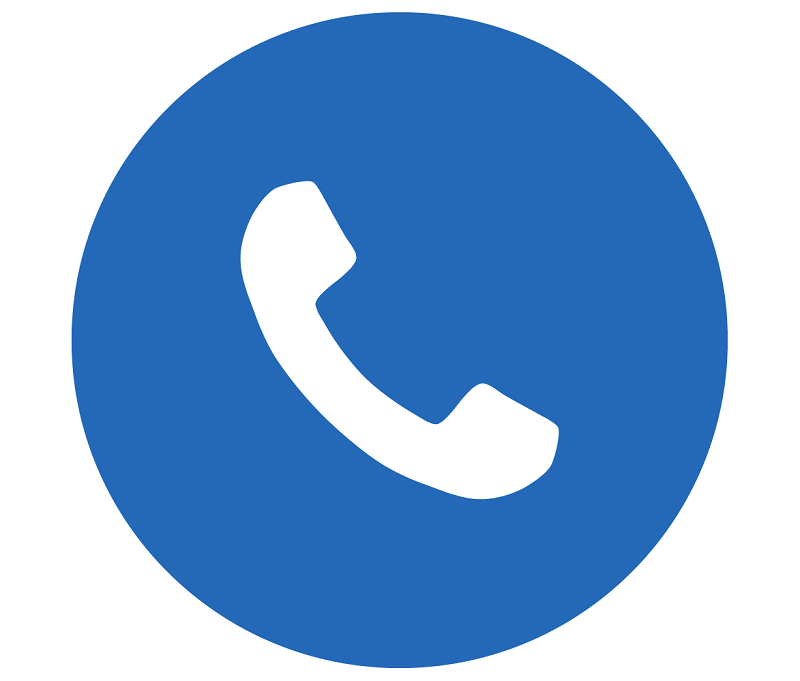
Достоинства:
- Бесплатное приложение;
- Эффективность определение спама;
- Простота скачивания;
- Наличие премиум версии с расширенным функционалом;
- Легкий понятный интерфейс;
- Возможность определения, как человек записан у других людей в контактах.
Недостатки:
- Обилие рекламы в бесплатной версии.
Get contact
Также популярный русскоязычный сервис для блокировки нежелательных звонков от мошенников, идентификации человека, получения информации о том, как пользователь записан у других людей. Эффективно блокирует все ненужные звонки, попадающие в базу опасных, в режиме реального времени. Доступен фильтр, с помощью которого можно самостоятельно настроить блокировку от спама.
Бесплатная версия работает только при наличии доступа в интернет, но это можно исправить путем приобретения премиум подписки. Перед использованием программы требуется пройти регистрацию по телефону. Работает практически на всех смартфонах.
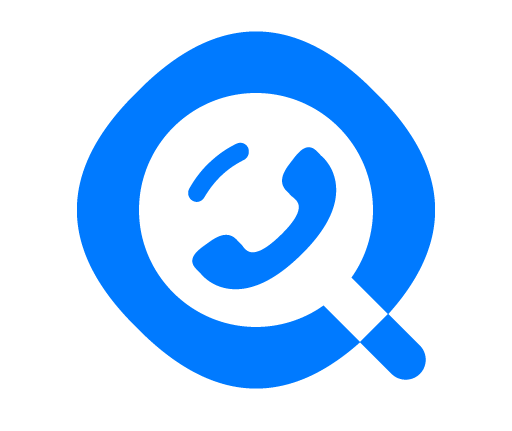
Достоинства:
- Эффективная блокировка нежелательных звонков;
- Защита в режиме реального времени он телефонных мошенников;
- Автоопределение звонящего;
- Функция определения того, как человек подписан у других людей.
Недостатки:
- Зависимость от интернет подключения;
- Требует доступ к контактам.
В случае необходимости любой абонент может удалить свой номер из базы приложения. Для этого нужно перейти на официальный сайт и следовать пошаговой инструкции.
CallApp
Сервис включает такие функции как определение номера, поиск по контактам с социальными сетями, запись звонков, блокировка спама, черный список, планировщик. Блокировку можно настроить самостоятельно. Автоматически туда добавляются мошенники, но пользователь может внести туда скрытые и частные номера.
Записанные разговоры сохраняются в архив при разрешении доступа к функции. После скачивания и инсталляции программы потребуется пройти регистрацию. Доступна авторизация по телефону или через аккаунт в социальных сетях.
Для работы нужно предоставить приложению доступ к своим контактам, чтобы управлять ими. Присутствует функция инкогнито, когда выбранные контакты становятся невидимыми (не отображается фото/номер). Может идентифицировать незнакомые вызовы в мессенджерах.
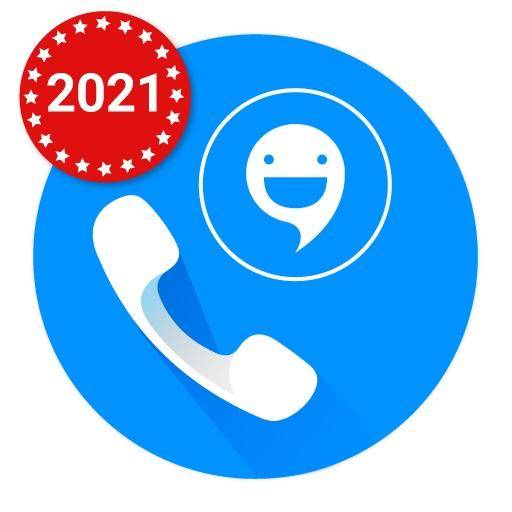
Достоинства:
- Наличие функции инкогнито;
- Планировщик задач;
- Возможность записи звонков;
- Идентификация в мессанджерах;
- Есть бесплатная версия.
Недостатки:
- Нужен доступ к контактам;
- Большое потребление интернет трафика.
Trapcall
Программа для идентификации входящих помогает в защите от мошенников. Это бесплатный сервис, но можно завести платную учетную запись для расширения возможностей. Есть функция записи звонков и сохранение их в архив для повторного прослушивания.
Программа определяет нежелательные номера по собственной базе, которая собирается с учетом отзывов других абонентов. Также может определить, кто звонит с частного, заблокированного, неизвестного номера.
С помощью обратного поиска можно точно узнать, кто звонил – его имя, фото. Поддерживается практически всеми моделями смартфонов. Есть черный список, куда пользователи сами вносят ненужные вызовы.
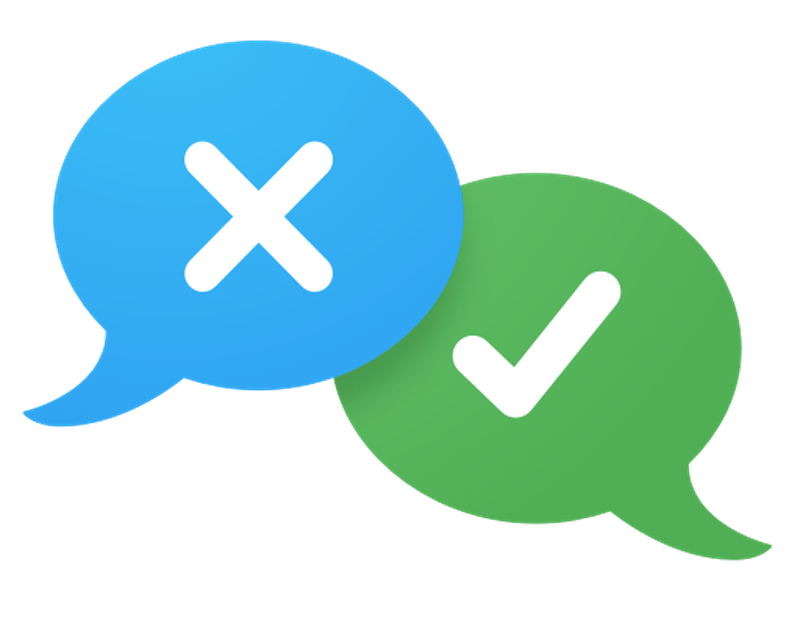
Достоинства:
- Быстро вычисляет ненужные звонки;
- Есть бесплатная версия;
- Занимает мало места;
- Большая база спамеров;
- Удобный интерфейс.
Недостатки:
- Обилие рекламы;
- Может глючить, зависать.
Kaspersky Who Calls
Бесплатный определитель номера на Андроид от лаборатории Касперского производит поиск входящих вызовов по собственной базе, которая регулярно пополняется новыми пользователями вручную. Можно самостоятельно внести нежелательный вызов в базу сомнительных контактов, чтобы не получать от него звонки.
В случае, если пользователю звонит спамер или мошенник, приложение вышлет об этом уведомление. Также есть защита от спам смс с вредоносными ссылками. Функция звонков безопасным абонентам уведомит пользователя, если он пытается набрать номер из списка спама. Входящие вызовы будут оснащены информацией о роде деятельности, сфере, рейтинге номера. Есть платная версия, в которой программа работает без доступа к интернету.
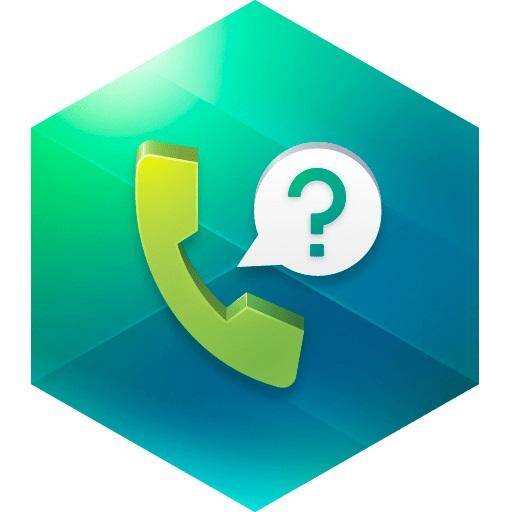
Достоинства:
- Минимальное потребление памяти;
- Блокировка мошенников;
- Определение номеров, на которые часто жалуются пользователи;
- Совместимость со всеми смартфонами Андроид версии 4.4 и выше;
- Не требует доступа к телефонной книге;
- Простота применения.
Недостатки:
- При работе через бесплатную версию должен быть включен интернет.
Cocospy
Программа с бесплатной демонстрационной версией подходит для любых версий Андроид. Работает в любой точке мира при доступе к интернету. Помимо блокировки нежелательных вызовов и определения есть функция получения точного местоположения абонента. Требует прохождения регистрации на сайте, после чего придет ссылка на скачивание.
Приложение будет полезным для родителей. Достаточно поставить его на телефон ребенка, чтобы знать, где он находится, наблюдать за его соцсетями и читать сообщения онлайн. После окончания пробной версии можно купить платную подписку. Их доступно несколько видов.
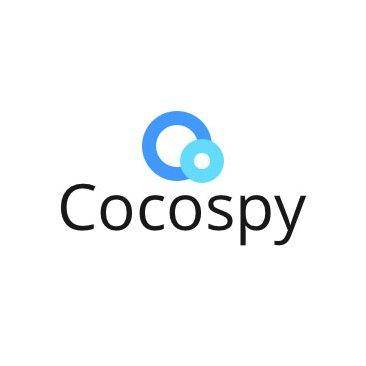
Достоинства:
- Наличие бесплатного пробного периода;
- Широкий функционал;
- Простая установка и эксплуатация;
- Идентификация источника звонка;
- Наличие пошаговой инструкции по применению на сайте.
Недостатки:
- Работает только при наличии интернета;
- Высокая стоимость обслуживания.
Hiya
Приложение определитель номера на Андроид полностью на английском языке. Оснащено встроенным блокировщиком, поиском информации о человеке по социальным сетям, определителем номера. Важным преимуществом является встроенная автоматическая проверка смс сообщений на наличие опасных или подозрительных спамерских ссылок.
Сама оформлена красиво и удобно, а также лишена рекламных баннеров. Для работы требуется стабильный интернет высокой скорости, иначе определение номеров и их блокировка будут происходить с задержками. От самого смартфона программа почти не требует производительности.
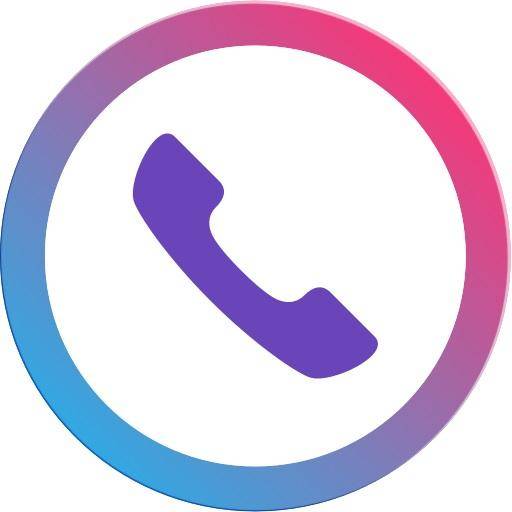
Достоинства:
- Проверка содержания смс на наличие опасных ссылок;
- Отсутствие рекламы;
- Наличие встроенного блокировщика;
- Синхронизация с соцсетями;
- Занимает минимум места на смартфоне.
Недостатки:
- Требуется стабильное подключение к интернету;
- Нет нормального перевода на русский язык.
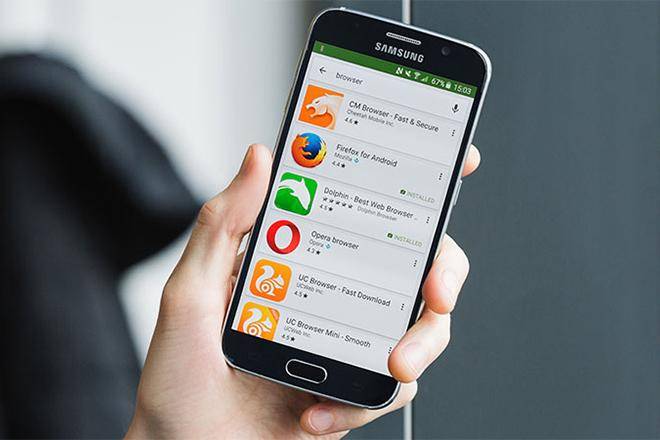
Лучшие определители номера на iPhone
На телефонах с ОС iOS отсутствует встроенный блокировщик. Чтобы защитить себя от мошенников, нужно установить определитель номера телефона на Айфон. В рейтинге приведены популярные сервисы с лучшим функционалом.
Sync.ME
Определитель, который подходит для телефонов на базе Андроид и iOS. Блокирует нежелательные звонки и смс от спамеров, мошенников. При звонке показывает личность звонящего, его имя, фотографию с собственного профиля в социальных сетях. Поиск неизвестных производится по собранной разработчиками и реальными пользователями базе, включающей более 10 миллионов человек.
Есть функция черного списка, который можно активировать в случае отсутствия на телефоне. Также приложение оснащено календарем, который будет напоминать о грядущих событиях, днях рождения. Все уведомления можно настроить.
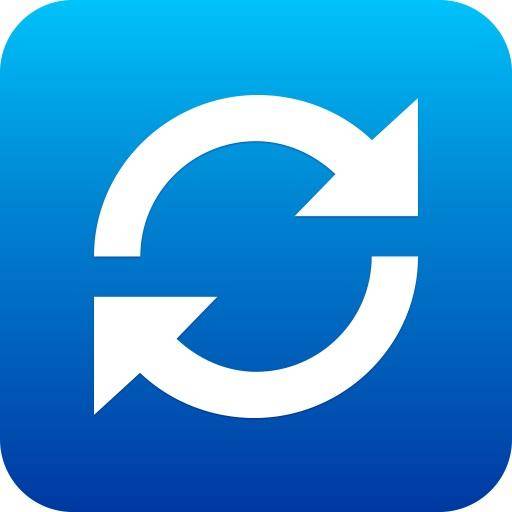
Достоинства:
- Наличие бесплатной демо версии;
- Блокировка ненужных звонков и смс;
- Поиск по телефону;
- Календарь с напоминаниями событий;
- Простой понятный интерфейс.
Недостатки:
- Реклама в бесплатной версии и неполный функционал.
Show Caller
Применяется для определения номера и региона вызывающего абонента. Может определять звонки мошенников, от телемаркетинга, роботов. Позволяет блокировать неизвестные номера, добавлять новые в телефонную книгу. Также предлагает функции предотвращения мошеннических смс, запись разговора.
Имеет собственную постоянно пополняемую базу данных. Работает даже в автономном режиме без доступа к интернету. При звонке показывает имя и фото абонента.
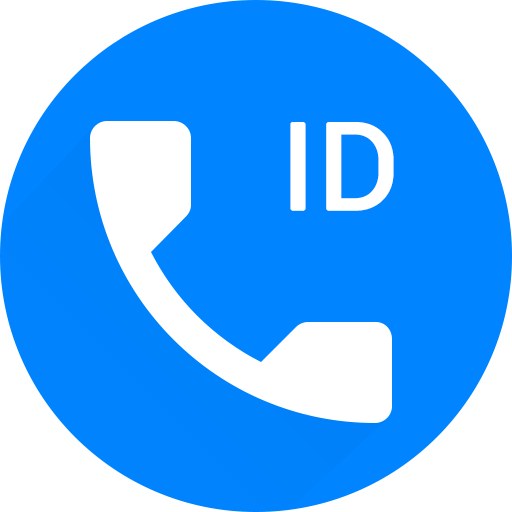
Достоинства:
- Огромная база данных;
- Работа без интернета;
- Возможность самостоятельного пополнения базы спамеров;
- Простота использования;
- Малый вес программы.
Недостатки:
- Требуется разрешение доступа к контактам.
Яндекс
Популярная компания разработала собственный определитель номеров для пользователей iPhone с версией iOS 11 и выше. Это программа с базовым функционалом, предназначенная для определения номеров и блокировки мошенников. Во встроенной базе содержится более 6 миллионов абонентов с информацией. Приложение не занимает много места, легко скачивается и устанавливается.
Определитель номера Яндекс на Айфон не раскрывает физические лица, а только показывает компании. Пользователи могут поучаствовать в обновлении баз путем оставления отзывов на входящие звонки. Через настройки устройствах можно блокировать вызовы.
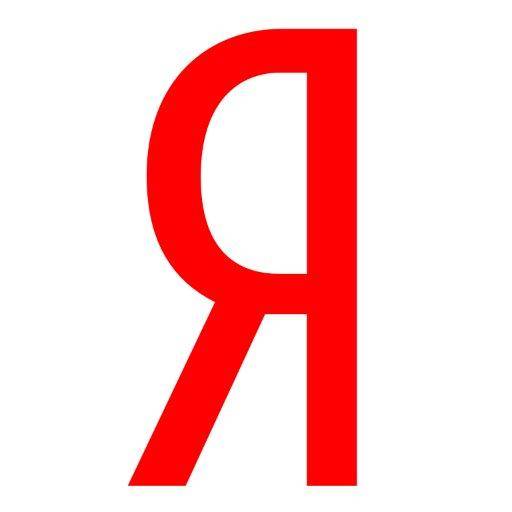
Достоинства:
- Простота применения;
- Малый вес;
- Широкая база контактов организаций;
- Сохранение информации о пропущенных вызовах;
- Анализ специальным алгоритмом частоты и длительности вызова.
Недостатки:
- Отсутствие дополнительных функций.
Как выбрать определитель номера для смартфона
Хороший удобный определитель выбирается каждым пользователем индивидуально под свои нужны. Прежде чем скачать определитель номера на телефон, нужно определить необходимость дополнительных опций, ОС телефона, наличие бесплатной пробной версии, безопасность самого приложения.
Операционная система
Приложение должно быть полностью совместимо с операционной системой, на которой работает смартфон. В нашем рейтинге приложения для айфонов и андроид разделены на две группы.
Безопасность
Многие программы требуют доступ к контактам, которые при утечке данных могут попасть к хакерам. По этой причине нужно выбирать проверенные сервисы. Также некоторые программы предлагают удалиться из своей базы.
Функционал и отзывы
Базовый набор функций определителя включает блокировку спам звонков, черный список, определение организации, которая звонит. К дополнительным опциям относятся:
- Возможность поиска по соцсетям с выводом на экран имени и фото;
- Определение, как пользователь записан у других людей в телефонной книге;
- Планировщик задач;
- Возможность добавления отзыва для пополнения базы.
Важно учитывать и отзывы. Из них можно узнать, как быстро работает приложение, какова его эффективность, как часто вносятся обновления в базу, сколько памяти занимает.
Какой определитель номера лучше
Приложения для определения и блокировки номеров полезны для защиты от мошеннических звонков якобы представителей банка, организаций, желающих продать свои услуги или товары или роботизированного обзвона. С учетом отзывов клиентов, возможностей, широты базы данных мы выделили следующие приложения:
- Truecaller с обширным функционалом, широкой базой номеров и бесплатной версией;
- ME для Android и iPhone;
- Базовый определитель от Яндекс для айфонов без лишних опций.
Все приведенные программы можно протестировать, чтобы понять, какая именно лучше подходит.
Номер телефона неразрывно связан с огромным объёмом информации о каждом человеке.
Достаточно того, что сама SIM-карта регистрируется только по паспорту, а для регистрации в популярных соцсетях нужно указать телефон.
Вот почему лишь одного номера может быть достаточно, чтобы, например, легально узнать имя и внешность человека, а также найти его страницы в соцсетях.
Мы разобрались, какую информацию можно получить о человеке, зная только его номер телефона.
1. Имя, внешность и страницы в соцсетях. Помогут WhatsApp и Telegram
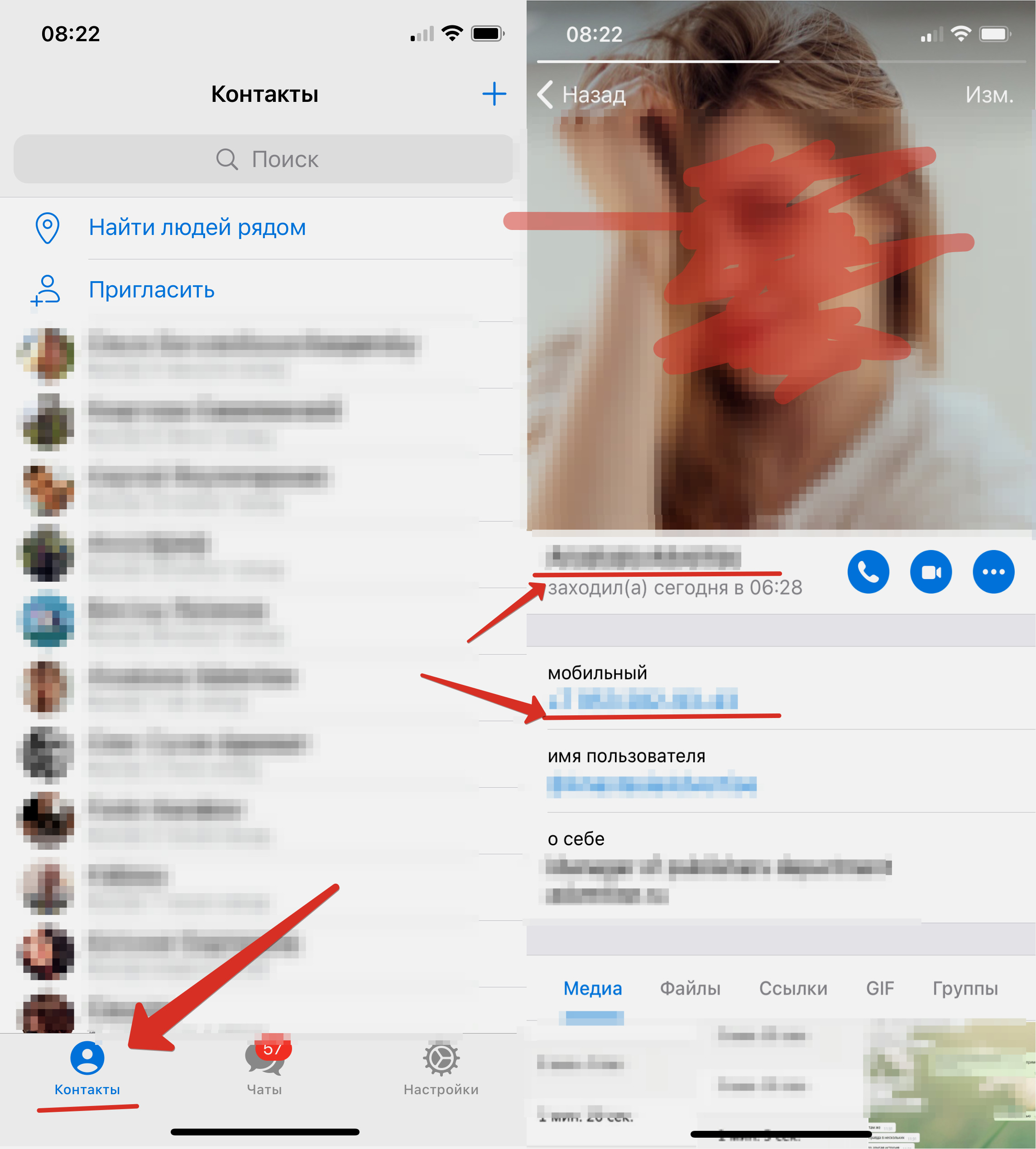 Если сохранить номер в контактах, то в мессенджерах появятся привязанные к нему профили.
Если сохранить номер в контактах, то в мессенджерах появятся привязанные к нему профили.
Если сохранить номер в контактах, его страницы станут доступны в Viber, WhatsApp и Telegram. Как правило, пользователь подписывает страницы своим именем.
Если на профиле стоит его фотография, с ее помощью можно найти его страницы в соцсетях и снимки в альбомах у других людей.
Достаточно скачать фото и загрузить его в поиск по картинкам Google (загрузка доступна только с компьютеров!). Сервис выдаст имя человека на фото и ссылки на его аккаунты в соцсетях.
Другой вариант для поиска человека по фотографии — Findclone. Загружаем на нем фотографию и получаем страницу человека во Вконтакте и снимки с ним на страницах других людей.
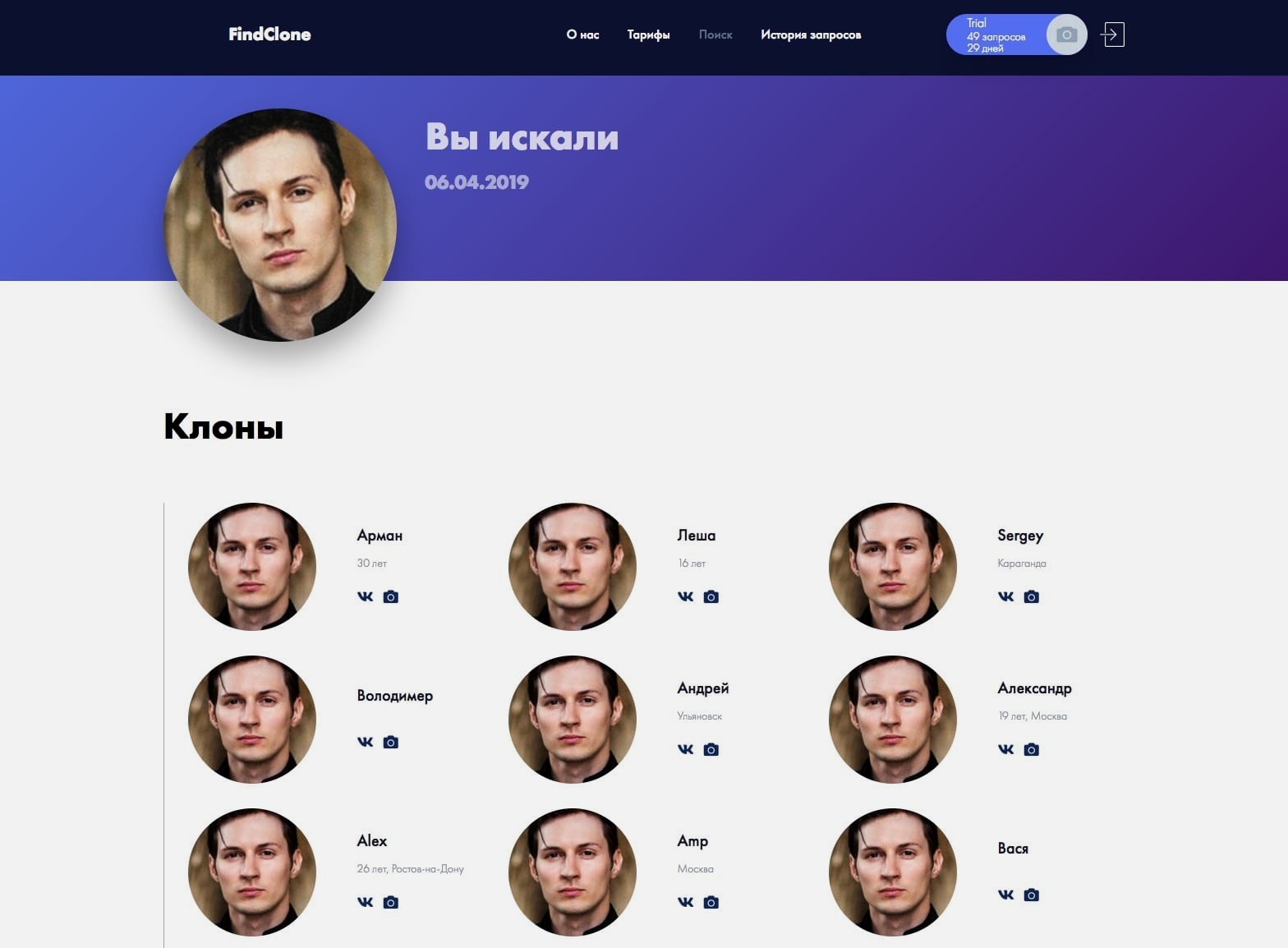
Findclone ищет человека по фотографиям во Вконтакте.
Впрочем, пользователь может ограничить доступность этих фото, и тогда способ не сработает.
В мессенджерах и соцсетях можно изменить настройки конфиденциальности так, чтобы лица, не входящие в список контактов человека, не видели его фото, номер телефона и активность. Например, в Вконтакте можно закрыть профиль. Тогда Findclone не найдет владельца страницы по фотографии.
2. Имя, отчество и первая буква фамилии. Выдаст мобильный банк
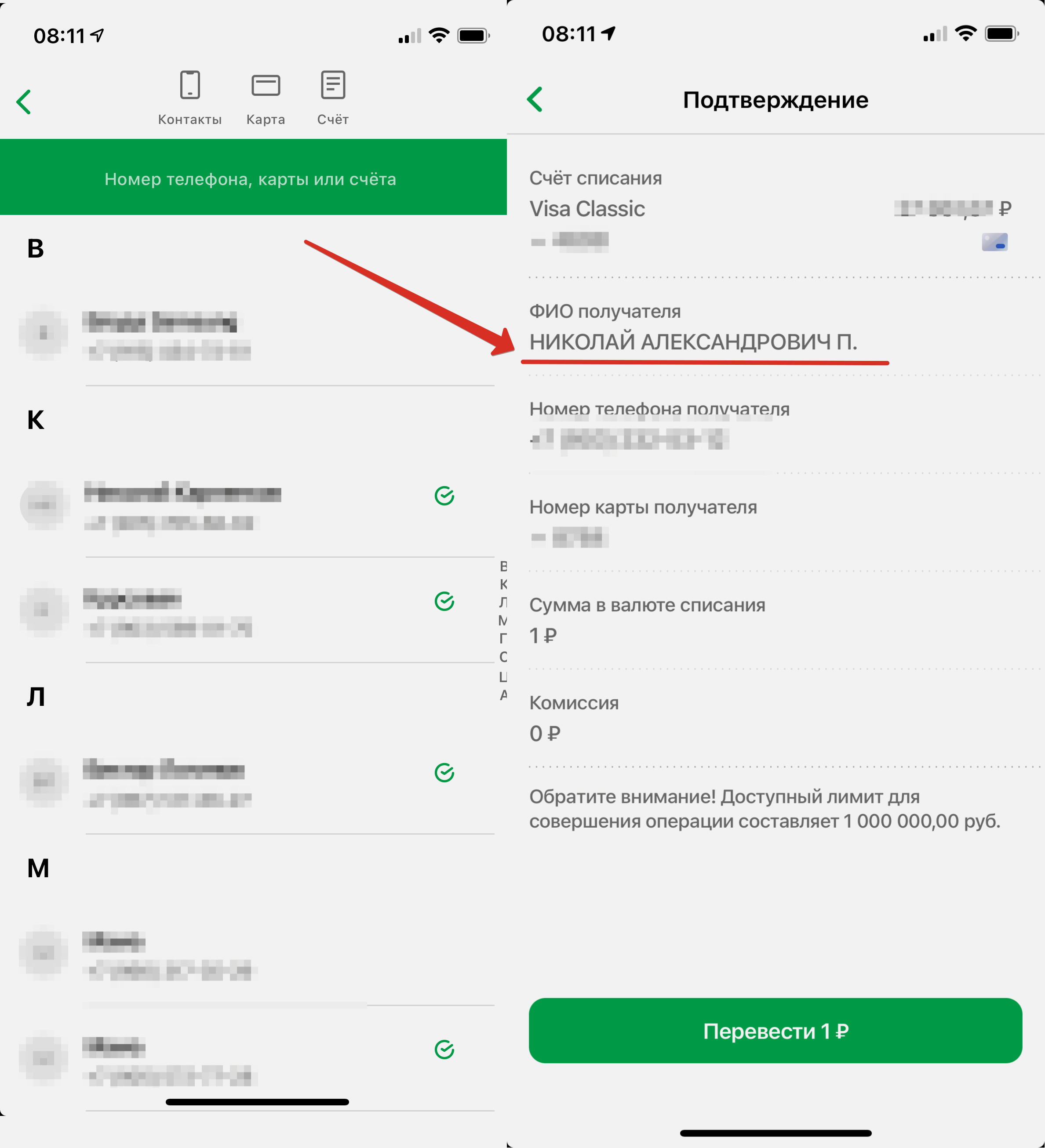
Данные видны при переводе денег по номеру телефона.
Просто попробуйте перевести 1 рубль по нужному номеру.
При переводе денег на карту того же банка по номеру телефона на экране появляется информация о переводе: сумма, размер комиссии, имя, отчество и первая буква фамилии получателя.
Совершать сам перевод для этого не надо. После загрузки информации о держателе карты можно просто отменить перевод, не доводя процедуру до конца.
Фишка работает в приложениях банка Тинькофф и у Сбера, а также в некоторых других. Мы писали о ней ранее.
3. Упоминания номера и отзывы. Покажет поисковик
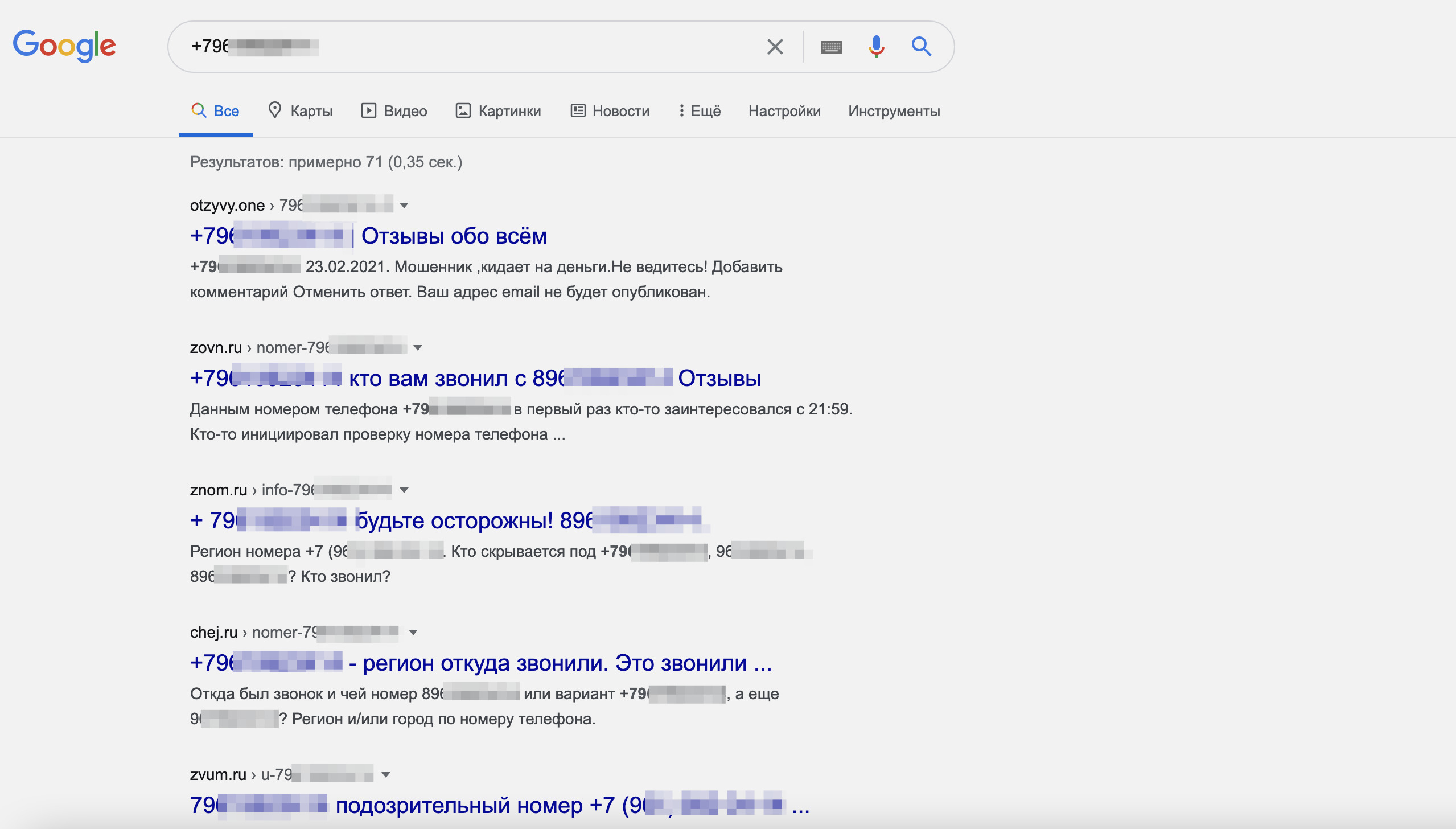
Поисковый сервис найдет упоминания номера в сети.
Если указать номер в поисковой строке Google или Яндекса, система со всех сайтов соберет информацию, где такой телефон когда-либо встречался.
Возможно, искомый номер был указан в одной из соцсетей и не скрыт настройками конфиденциальности. Также есть вероятность, что он упомянут в профиле на каком-либо сайте.
4. Местоположение человека. Пробиваем на специальном сайте

Вводите номер в специальную строку, и сайт показывает данные о регистрации номера.
Для определения спама созданы специализированные сервисы. Их много. Например, один из таких – кто-звонит.рф.
Он даст информацию о возможном спам-звонке, а также о месте регистрации СИМ-карты.
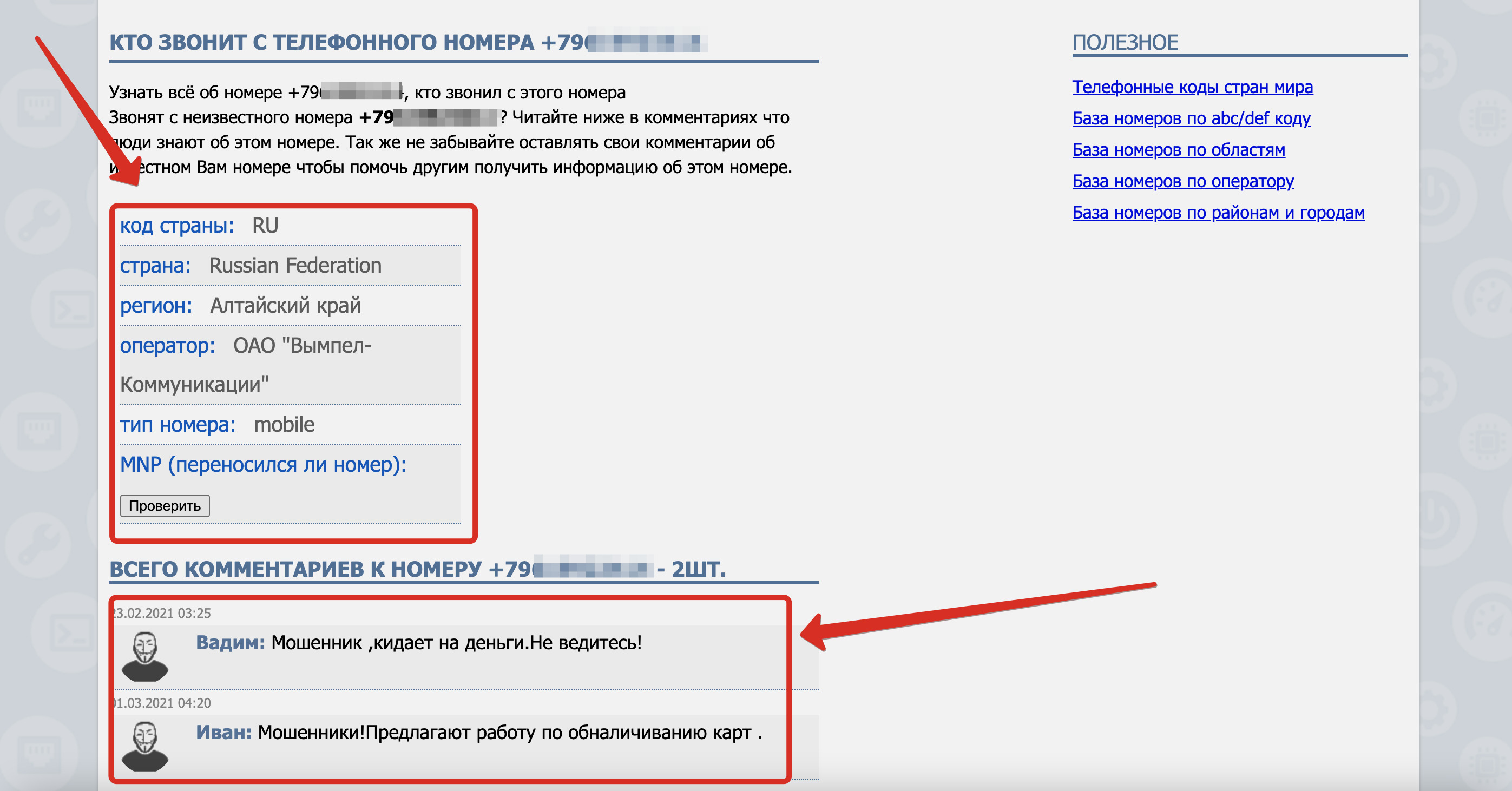
Данные сервиса кто-звонит.рф. Оператор, регион, где СИМ-карта зарегистрирована, отзывы.
Введите 10 последних цифр (без +7) в специальное поле на сайте. Сервис выдаст: оператора, регион, в котором зарегистрирован номер, отзывы других пользователей, которые ранее с ним сталкивались.
Откуда этот сервис берёт данные, неизвестно. Поэтому используйте на свой страх и риск.
5. Имя, страница в Facebook, регион, адрес. Расскажут Telegram-боты
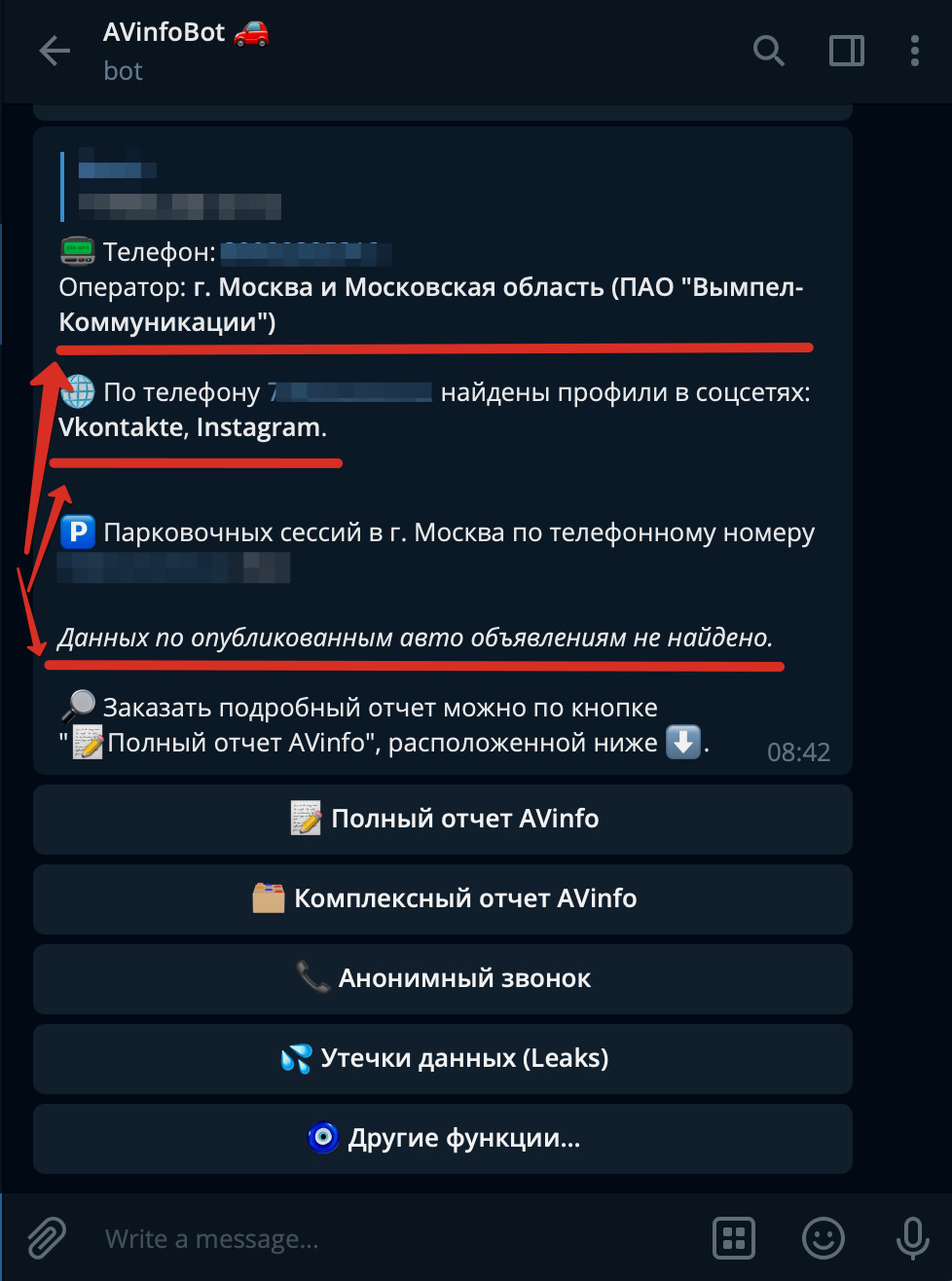 AVinfoBot ищет номер среди объявлений о продаже авто.
AVinfoBot ищет номер среди объявлений о продаже авто.
В мессенджере есть масса ботов, способных предоставить информацию о человеке по номеру телефона. Вот главные боты для пробива номера:
▶ https://t.me/GetCont_bot: выдает имя пользователя
▶ https://t.me/Tpoisk_Bot: выдает имя пользователя
▶ https://t.me/getfb_bot: выдает ссылку на профиль Facebook
▶ https://t.me/bmi_np_bot: определяет регион и оператора
▶ https://t.me/avinfobot: определяет номер авто по номеру телефона владельца
▶ https://t.me/mailsearcher_bot: выдает имя пользователя по базам данных e-mail
▶ https://t.me/numberPhoneBot: выдает адрес и имя пользователя
6. На кого зарегистрирована симкарта. Расскажет сотовый оператор
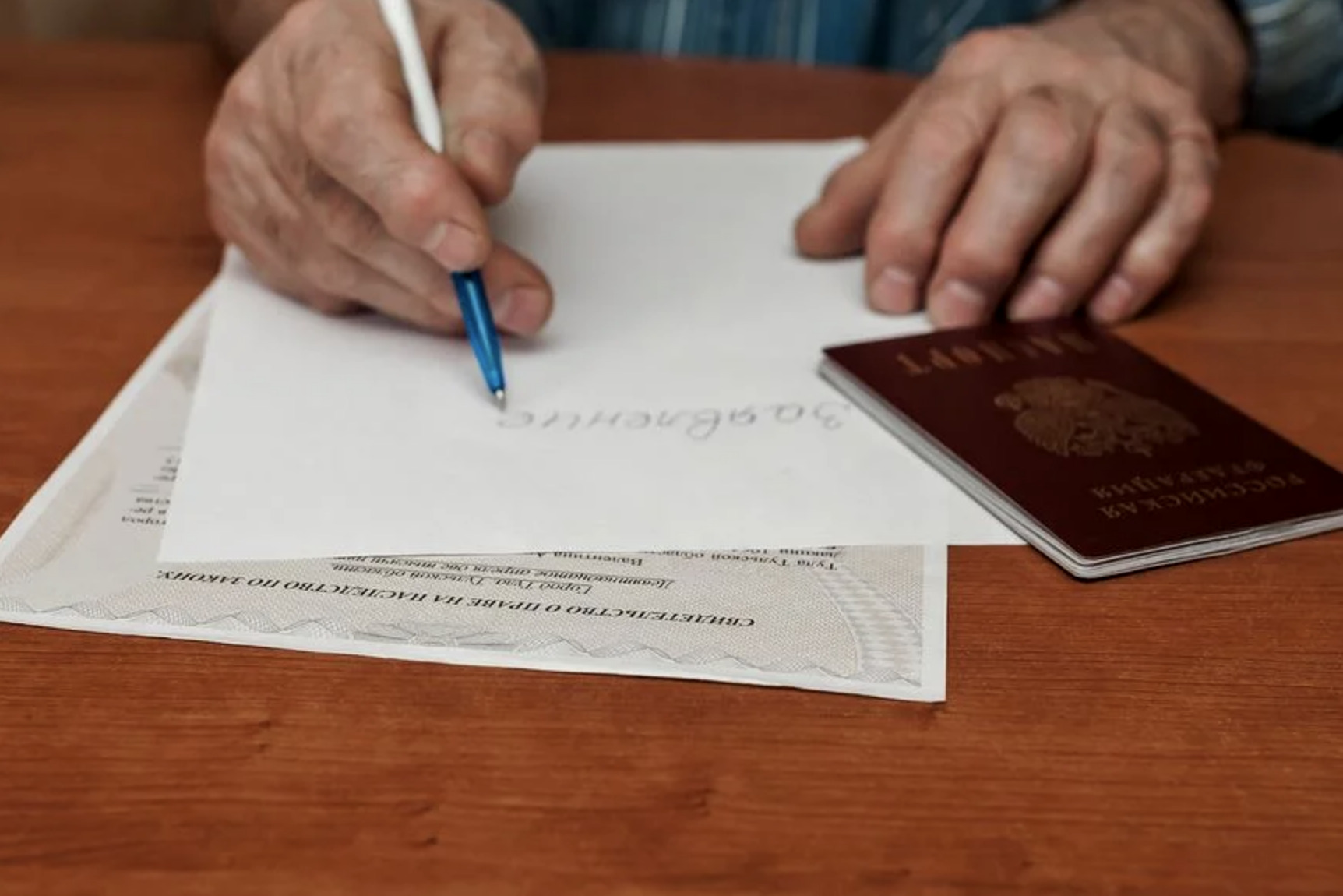
Есть и официальные способы получить информацию о владельце номера телефона. Первый — обращение к оператору связи.
У любого сотового оператора можно подать запрос на получение сведений о владельце номера. Нужно подать запрос, написав особое заявление в салоне связи.
Главный пункт заявления — обоснование вашего интереса к таким данным. Оператор должен посчитать его весомым для удовлетворения запроса.
Например, запрос с причиной «хочу узнать, кто мне вчера звонил» будет отклонен. Другое дело, если скрывающийся под этим номером человек угрожает вам или вашей семье. В этом случае операторы могут пойти навстречу абоненту и предоставят сведения об искомом контакте.
7. Имя, паспортные данные и местоположение. Пробьют силовики при открытии дела
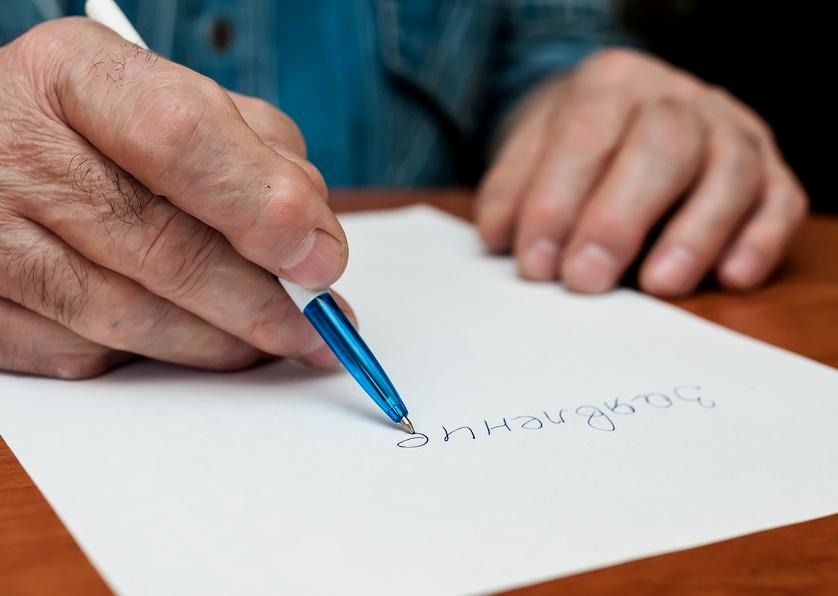
Есть вероятность, что оператор не станет разбираться с серьезными запросами на определение личности телефона. Если нужно найти преступника, пропавших людей или украденный телефон, сведения от оператора могут запросить только сотрудники полиции и спецслужб.
Там также могут помочь с раскрытием личности человека по номеру телефона, но только после открытия административного или уголовного дела.
Так или иначе, вам будет необходимо обратиться в полицию с заявлением на человека. Если органы примут заявление и заведут дело, они отправят официальный запрос на пробивку номера к оператору. Тот в обязательном порядке предоставит необходимые данные.
Ещё полезные статьи о поиске информации:
▪Как узнать, находится ли человек в розыске
▪ Как узнать собственника квартиры или участка. Без этой выписки могут отобрать имущество
▪ Как узнать о человеке всё по фамилии и имени




 (127 голосов, общий рейтинг: 4.46 из 5)
(127 голосов, общий рейтинг: 4.46 из 5)
🤓 Хочешь больше? Подпишись на наш Telegram.

iPhones.ru
Номер телефона неразрывно связан с огромным объёмом информации о каждом человеке. Достаточно того, что сама SIM-карта регистрируется только по паспорту, а для регистрации в популярных соцсетях нужно указать телефон. Вот почему лишь одного номера может быть достаточно, чтобы, например, легально узнать имя и внешность человека, а также найти его страницы в соцсетях. Мы разобрались, какую…
- Безопасность,
- Это интересно
![]()
Кто звонил? Как узнать владельца телефонного номера ? Как узнать, кто вам звонил? Эти вопросы — одна из самых популярных идей, когда вы видите входящий звонок на своем устройстве. Поэтому мы решили собрать все возможное, чтобы проверить скрытую информацию о номере телефона в одном месте. Эта статья может помочь вам отследить владельца телефонного номера.
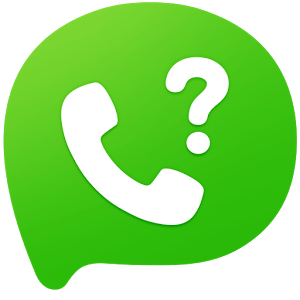 Здесь вы найдете наши уловки и советы, как узнать имя человека и другую полезную информацию по его номеру телефона. Это руководство может быть очень полезным, если у вас есть пропущенный звонок с неизвестного номера телефона, и вы хотите, чтобы я опознал звонящего . Лучший способ узнать владельца телефонного номера и отследить звонящего — это объединить все перечисленные ниже методы.
Здесь вы найдете наши уловки и советы, как узнать имя человека и другую полезную информацию по его номеру телефона. Это руководство может быть очень полезным, если у вас есть пропущенный звонок с неизвестного номера телефона, и вы хотите, чтобы я опознал звонящего . Лучший способ узнать владельца телефонного номера и отследить звонящего — это объединить все перечисленные ниже методы.
- Самый простой способ узнать владельца номера телефона — это просто погуглить. Данные поисковых систем могут содержать много полезной информации о номере телефона. Итак, первый шаг к отслеживанию информации о вызывающем абоненте — найти как можно больше информации для поиска.
- Проверить неизвестный номер телефона непросто. Однако оказывается, что в сети есть сайты, на которых вы можете бесплатно и в большинстве случаев успешно проверить, кто вам звонил. Обычно все, что вам нужно сделать, это просто ввести номер телефона, который вы пытаетесь найти, и нажать кнопку «Поиск». Платформа поиска использует прямое партнерство с тысячами мобильных компаний по всему миру, глубокий поиск и другие уловки для поиска точных данных. Вы можете использовать одну из следующих платформ поиска: www.revealname.com , www.truecaller.com , www.sync .меня.

- Есть также несколько платформ, которые предоставляют расширенную информацию о владельце номера телефона. Эти услуги проверки обычно являются платными. Один из самых популярных — www.whitepages.com . Огромным преимуществом этой платформы является актуальная информация и возможность проверить общее местонахождение звонящего.
- Еще одна полезная услуга — CARRIER LOOKUP TOOL . Здесь вы можете разместить скрытую информацию о носителе номера телефона. Процесс анализа телефонных номеров очень прост и, что более важно, вы можете получить эту ценную информацию совершенно бесплатно! Поэтому, если вам нужно проверить оператора мобильной связи, просто используя номер мобильного телефона, CARRIER LOOKUP TOOL — лучший вариант. Подробнее: ИНСТРУМЕНТ ПРОСМОТРА ПЕРЕВОЗКИ

- Ответить или отклонить звонок с неизвестного номера? Многие из нас, вероятно, сталкивались с такой дилеммой. Приложение Hiya должно решить эту проблему. Глобальная база данных с подробной информацией о профиле звонящего позволяет получить информацию о звонящем. Давайте узнаем имя звонящего или компанию сразу на экране вашего телефона. Это лучший способ избежать нежелательных звонков спамеров. Больше информации: www.hiya.com

- Если вы идентифицируете своего абонента и не хотите звонить с этого номера, вам следует заблокировать этот номер. Вы можете узнать, как это сделать, используя учебные пособия по блокировке вызовов :
Добавлено 2018-10-24 16:09 по -Просмотрено 81605 раз.
NEW:
29-12
2022 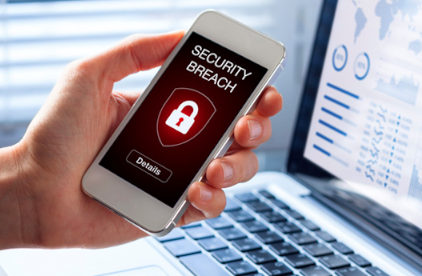
Оставайтесь в безопасности перед лицом огромной дыры в мобильной безопасности
Миллионы людей находятся в опасности из-за дыры в безопасности Android -устройств. Хакеры могут использовать эту уязвимость для доступа к конфиденциальной информации вашего устройства, такой как ваши пароли и контакты. Но не нужно паниковать. В этой статье; вы узнаете несколько замечательных советов, как оставаться в безопасности в Интернете. Так что не ждите больше и берегите свои данные от посторонних глаз!
30-10
2022 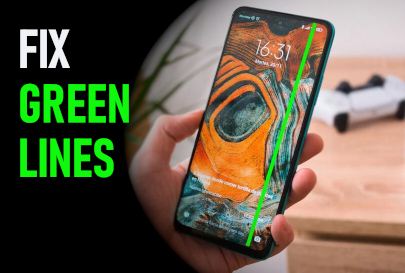
Как исправить зеленую линию на телефоне Android?
Используя Android-смартфон, вы можете довольно часто сталкиваться с проблемой зеленых полос на экране. Тем не менее, проблема может возникнуть по ряду причин, которые могут быть не очень очевидными. Как лучше всего исправить зеленые линии на вашем смартфоне? Как исправить зеленые линии на телефоне Android? Мы собираемся рассказать вам, почему вы можете столкнуться с этой проблемой сегодня, и как вы можете ее решить.
30-10
2022 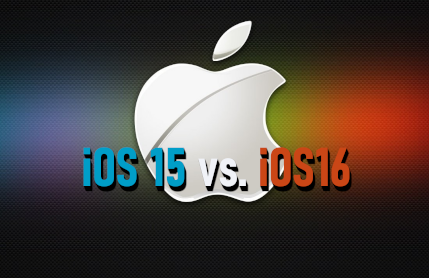
iOS 15 против iOS 16: что лучше?
Во время выпуска iOS 15 Apple прямо разрешила пользователям оставаться на iOS 14 и получать обновления — впервые компания предоставила этот путь для продолжения использования предыдущей версии iOS после выпуска новой версии. Как вы думаете, вам следует сразу же обновиться до iOS 16 или лучше оставить iOS 15 на потом?
POPULAR:
26-07
2022 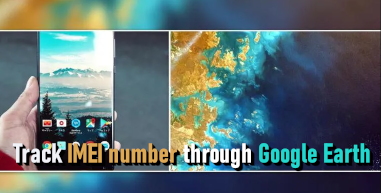
Отследить номер IMEI через Google Earth
Можно ли отследить номер IMEI через Google Earth? Этот вопрос вызывает много споров в Интернете, но мы расскажем, как оно есть на самом деле. С другой стороны, бесспорно, что IMEI играет важную роль в любом устройстве. Знание номера IMEI вашего устройства полезно во многих ситуациях, о которых вы прочтете далее в нашем руководстве. Оба базовых знания Google Планета Земля также помогут вам во многих ситуациях — проверьте, в каких именно!
30-10
2022 
Как исправить зеленую линию на телефоне Android?
Используя Android-смартфон, вы можете довольно часто сталкиваться с проблемой зеленых полос на экране. Тем не менее, проблема может возникнуть по ряду причин, которые могут быть не очень очевидными. Как лучше всего исправить зеленые линии на вашем смартфоне? Как исправить зеленые линии на телефоне Android? Мы собираемся рассказать вам, почему вы можете столкнуться с этой проблемой сегодня, и как вы можете ее решить.
19-10
2022 
Как легко обойти учетную запись Google?
Блокировка FRP может быть замаскированным благословением, если кто-то попытается получить root права на ваше устройство Android, но это также может вызвать проблемы для вас. Если вы забыли учетные данные своей учетной записи Google, FRP будет активирован при сбросе телефона к заводским настройкам. Вам нужно будет обойти учетную запись Google, которую вы забыли, чтобы получить доступ к своему устройству.
Эта ситуация требует, чтобы вы нашли надежный инструмент для удаления экрана блокировки Android , который может обойти FRP на вашем устройстве, не повреждая его.
Dr.Fone – Разблокировка экрана (Android) – ваш выход из этой ситуации.
30-10
2022 
iOS 15 против iOS 16: что лучше?
Во время выпуска iOS 15 Apple прямо разрешила пользователям оставаться на iOS 14 и получать обновления — впервые компания предоставила этот путь для продолжения использования предыдущей версии iOS после выпуска новой версии. Как вы думаете, вам следует сразу же обновиться до iOS 16 или лучше оставить iOS 15 на потом?
Комментарии наших пользователей: (14):
Идентификация в мессенджерах по номеру телефона – чем грозит и для чего нужно
8 ноября 2018
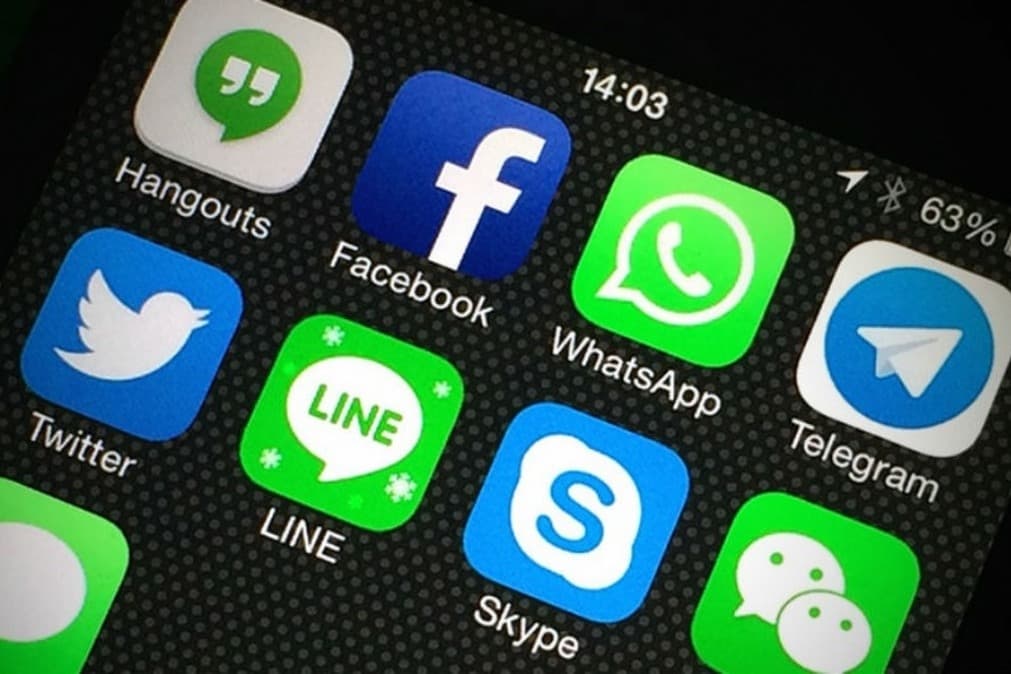
5 октября 2018 года в Российских СМИ появилась информация о подписании Председателем правительства Российской Федерации Д. А. Медведевым постановления, обязывающее мессенджеры идентифицировать пользователя по номеру телефона. Как будет исполняться закон, чем это грозит пользователям и для чего это нужно? Рассмотрим далее.
Полностью документ называется Постановление Правительства от 27 октября 2018 г. N 1279 «Об утверждении Правил идентификации пользователей информационно-телекоммуникационной сети «Интернет» организатором сервиса обмена мгновенными сообщениями». Сам текст закона проще изобразить схемой (спасибо сайту Ведомости):
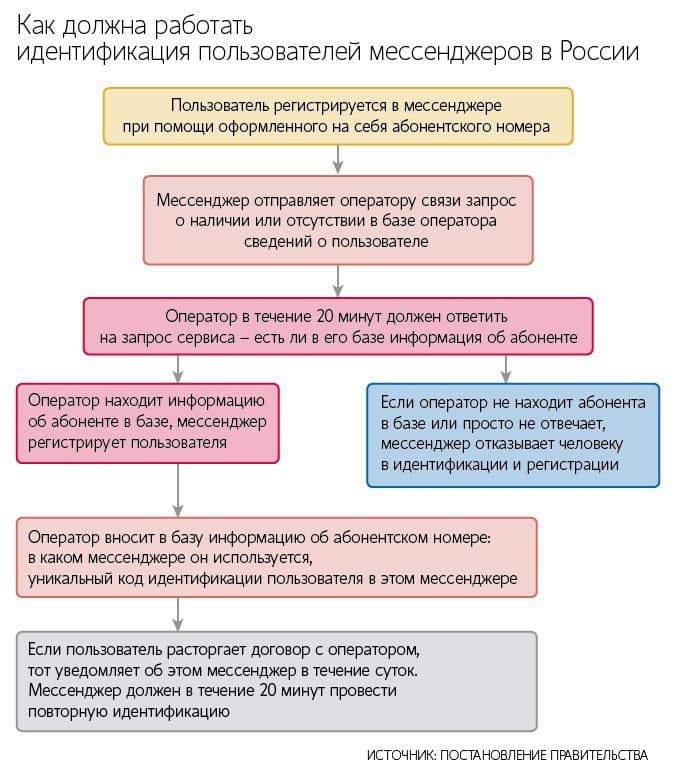
Тут вроде бы понятно. Но чтобы продолжать дальше, нужно разобраться, какие мессенджеры популярны в России в 2018 году.
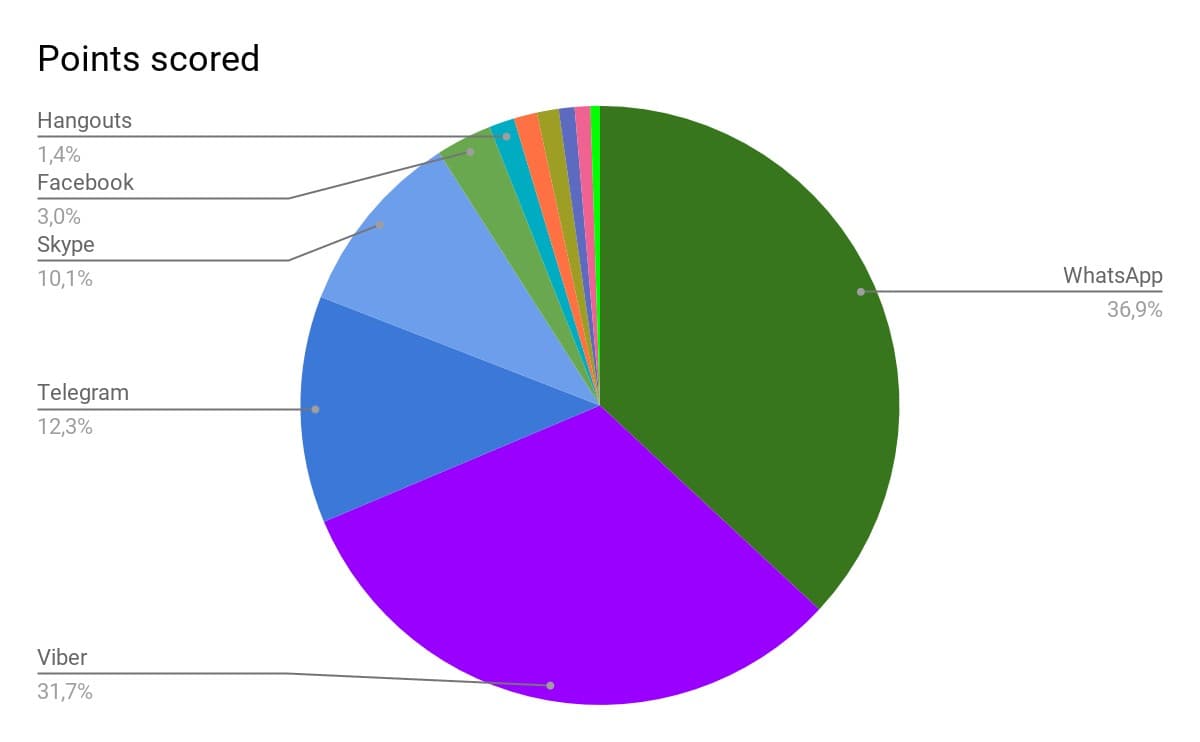 Диаграмма составлена по данным akket.com. Результат, как говорится, на лицо. Ярко-зеленая узкая полоса в центре — это пользователи Там-Там — их всего 300 тысяч, согласно данным vc.ru. По факту, из 11 мессенджеров:
Диаграмма составлена по данным akket.com. Результат, как говорится, на лицо. Ярко-зеленая узкая полоса в центре — это пользователи Там-Там — их всего 300 тысяч, согласно данным vc.ru. По факту, из 11 мессенджеров:
- все регистрируются по sms;
- только 3 российских — всего 33%, да и те принадлежат все тому же Mail.Ru Group;
- один “заблокирован” на территории России;
- еще три на грани блокировки — WhatsApp, Viber и Facebook, так как не включены в реестр ОРИ;
Кто что получает:
Мессенджеры:
- “головную боль” вызванную регистрацией пользователя и подтверждением личности;
- информацию о пользователях, которую возможно использовать в личных целях. Добавим к этому периодическую утечку данных из Facebook, думаю, продолжать не стоит.
Операторы сотовой связи:
- “головную боль” в реализации предоставления данных сразу всем мессенджерам;
- добровольная утечка пользовательских данных;
- помимо затрат на выполнение требований «Яровой» это дополнительно увеличивает расходы, которые неизбежно лягут на клиентов.
Клиенты:
- “головную боль” вызванную, в худшем случае, 20 минутным ожиданием при регистрации — п. 4 рассмотренного выше постановления Правительства;
- теоретически возможная передача собственных персональных данных третьим лицам;
- прочие проблемы бюрократической “машины” — то в фамилии опечатка, то “симка” на другого члена семьи, то “симка” куплена в переходе (хотя это недопустимо);
- рост цен на услуги сотовой связи — НДС, “Яровая” и, вероятно, это “новшество”.
Государство и силовые ведомства:
- своего рода, подспорье в антитеррористическом законе;
Телеграм остается в стороне, потому что:
- “заблокирован”;
- вообще не станет в этом участвовать, т.к. ратует за полную анонимность, хотя, возможно, также заинтересован в пользовательской информации.
Получается, что преимущества получают только силовые структуры, в целях борьбы с терроризмом, что в целом важно. На мессенджерах от этого никак не скажется. Операторы связи получают некоторые “неудобства”. А простые пользователи окажутся наиболее пострадавшей стороной, косвенно оплачивая исполнение нового постановления.


